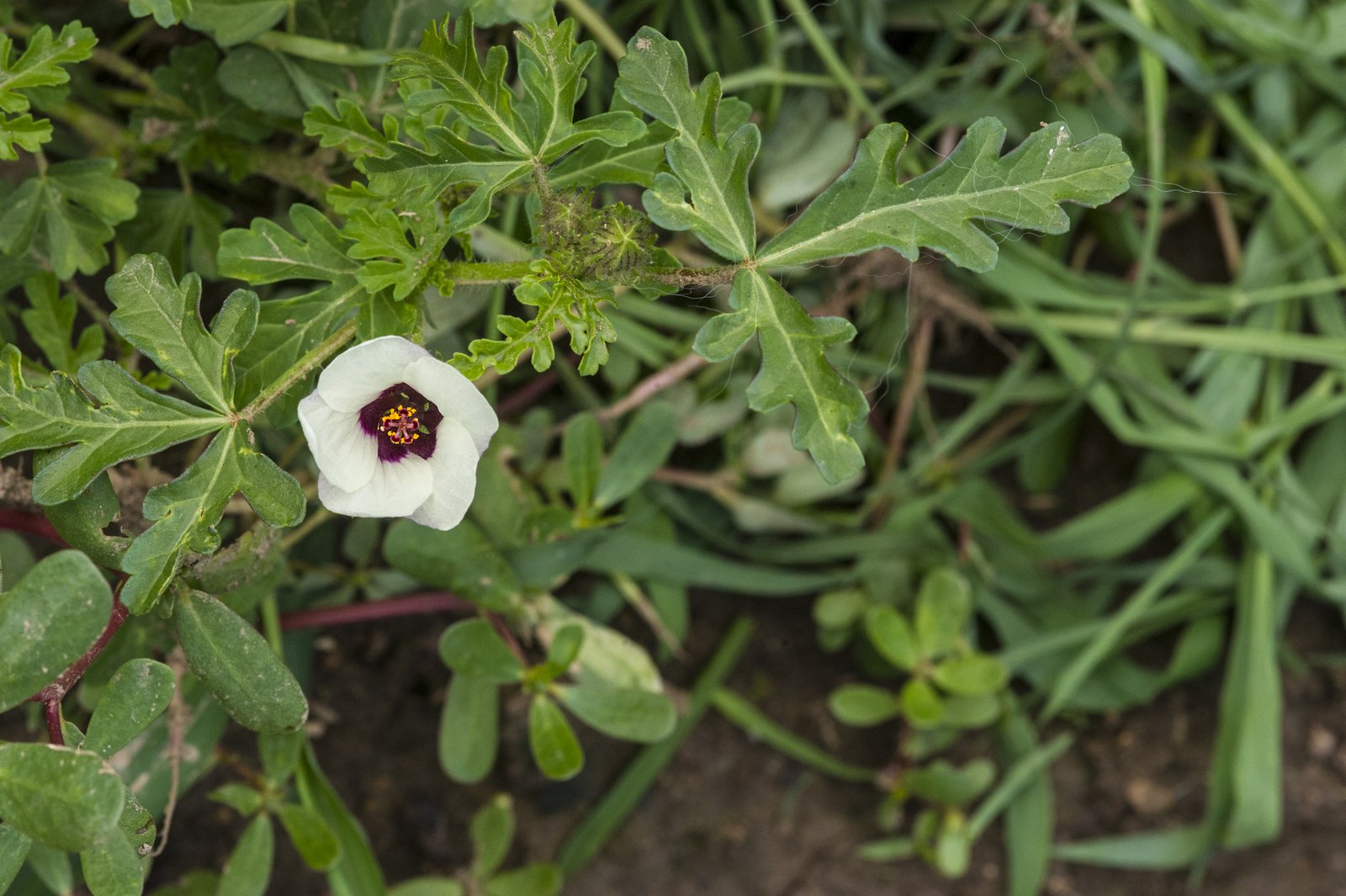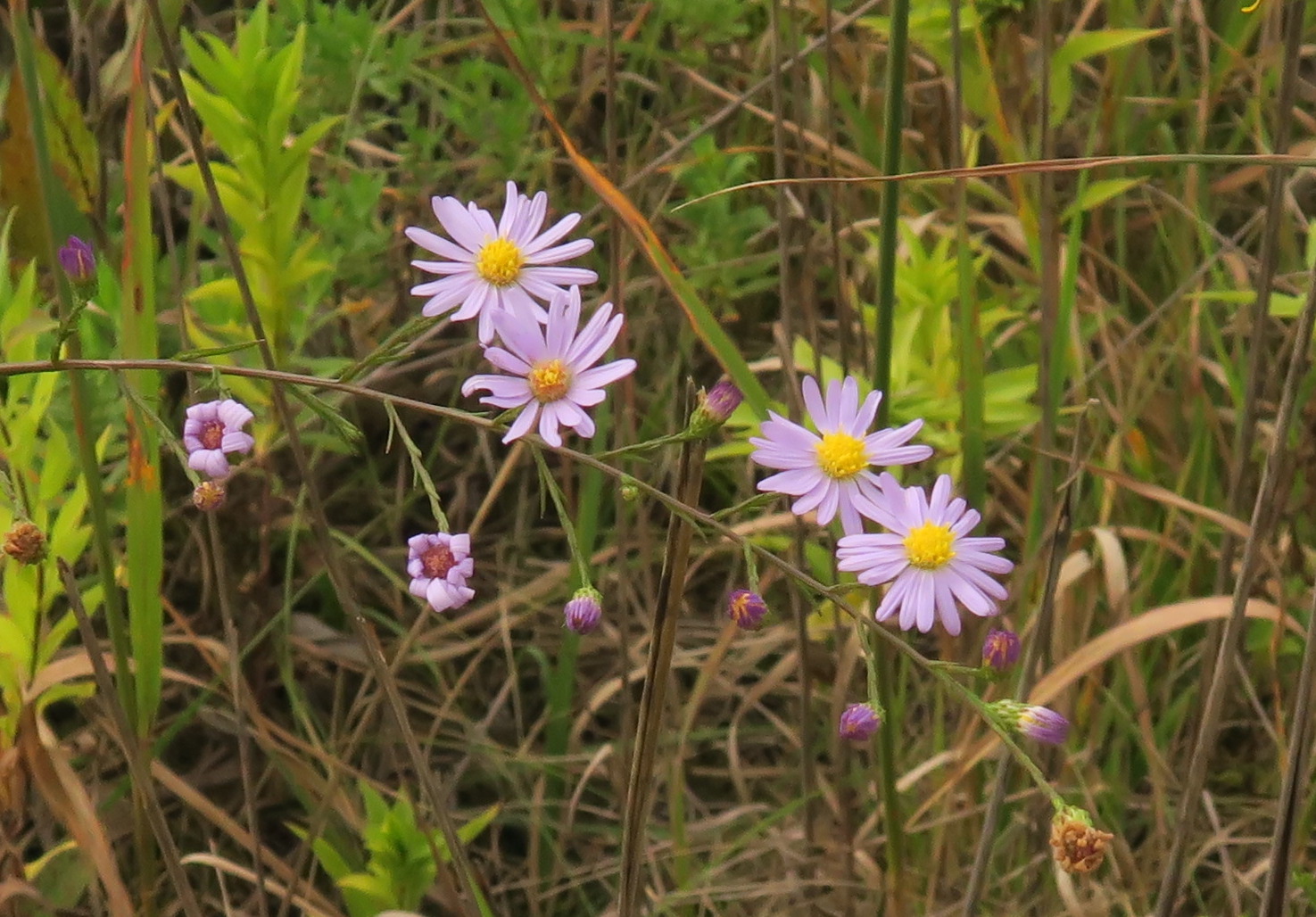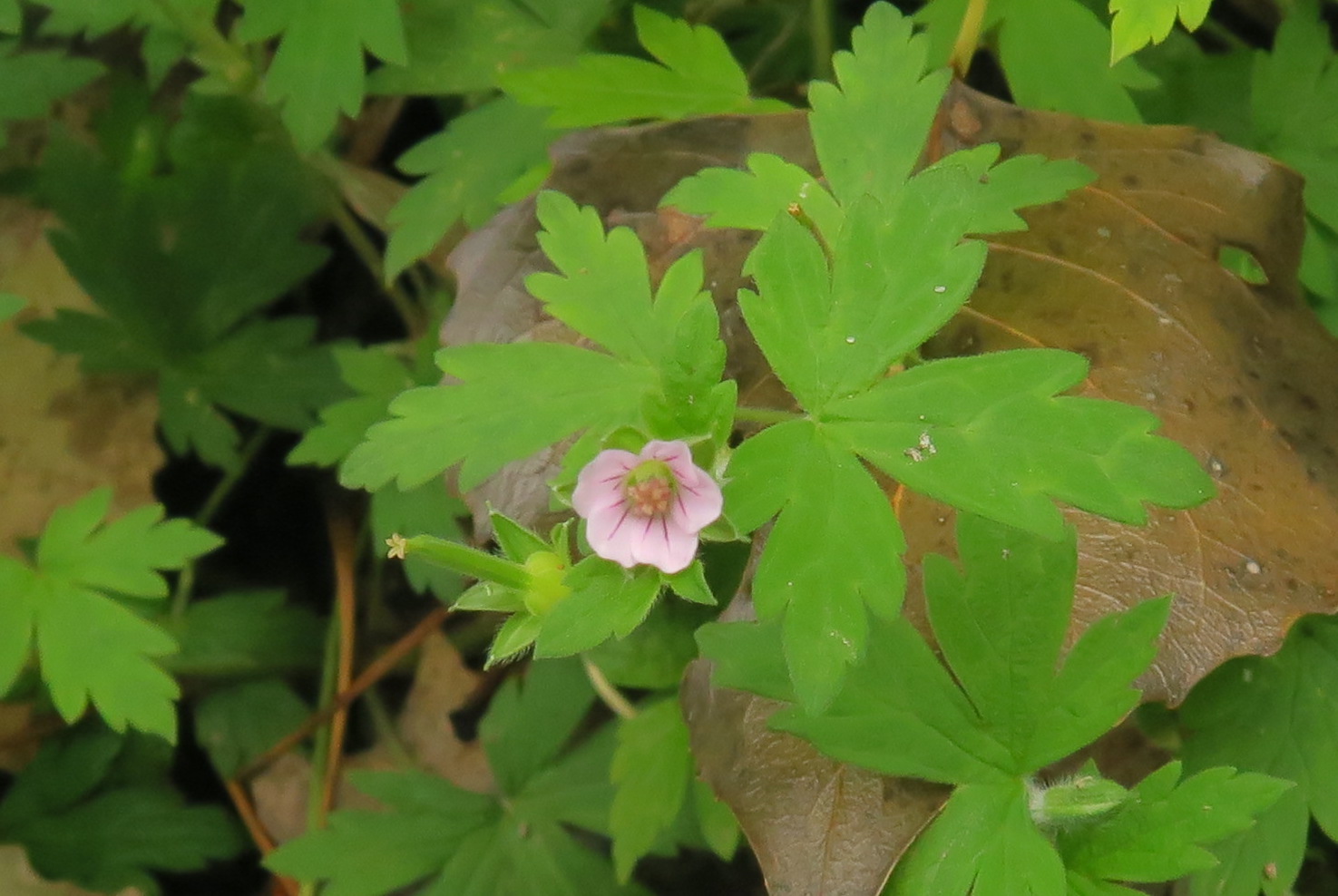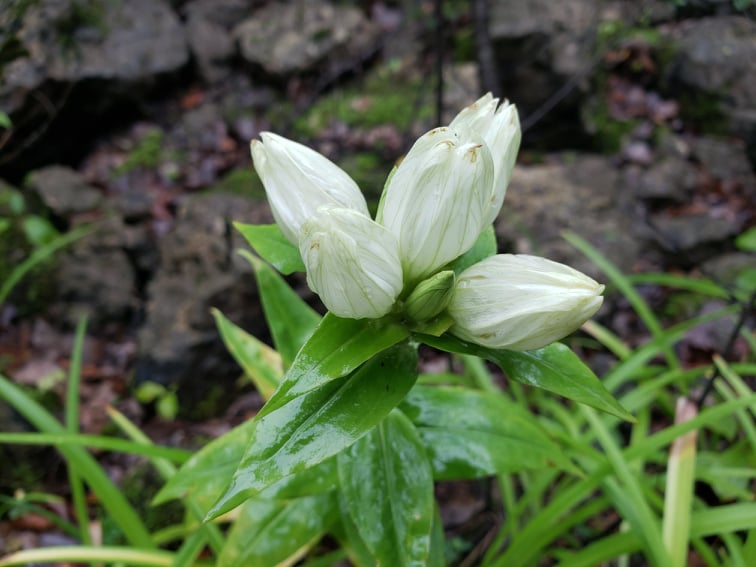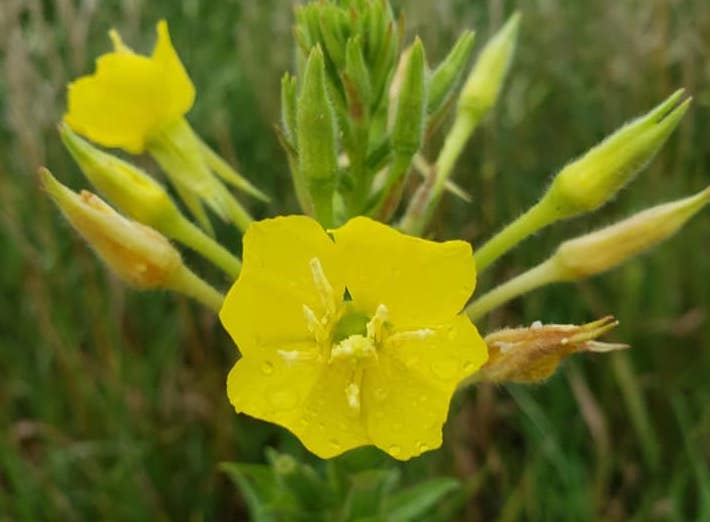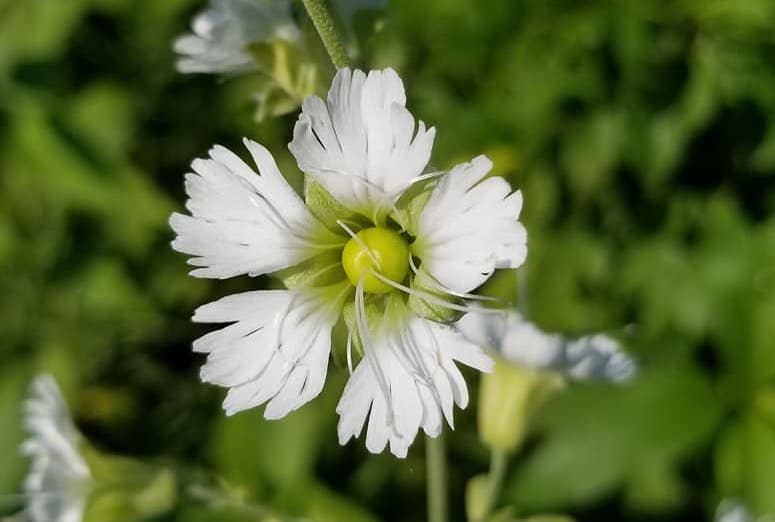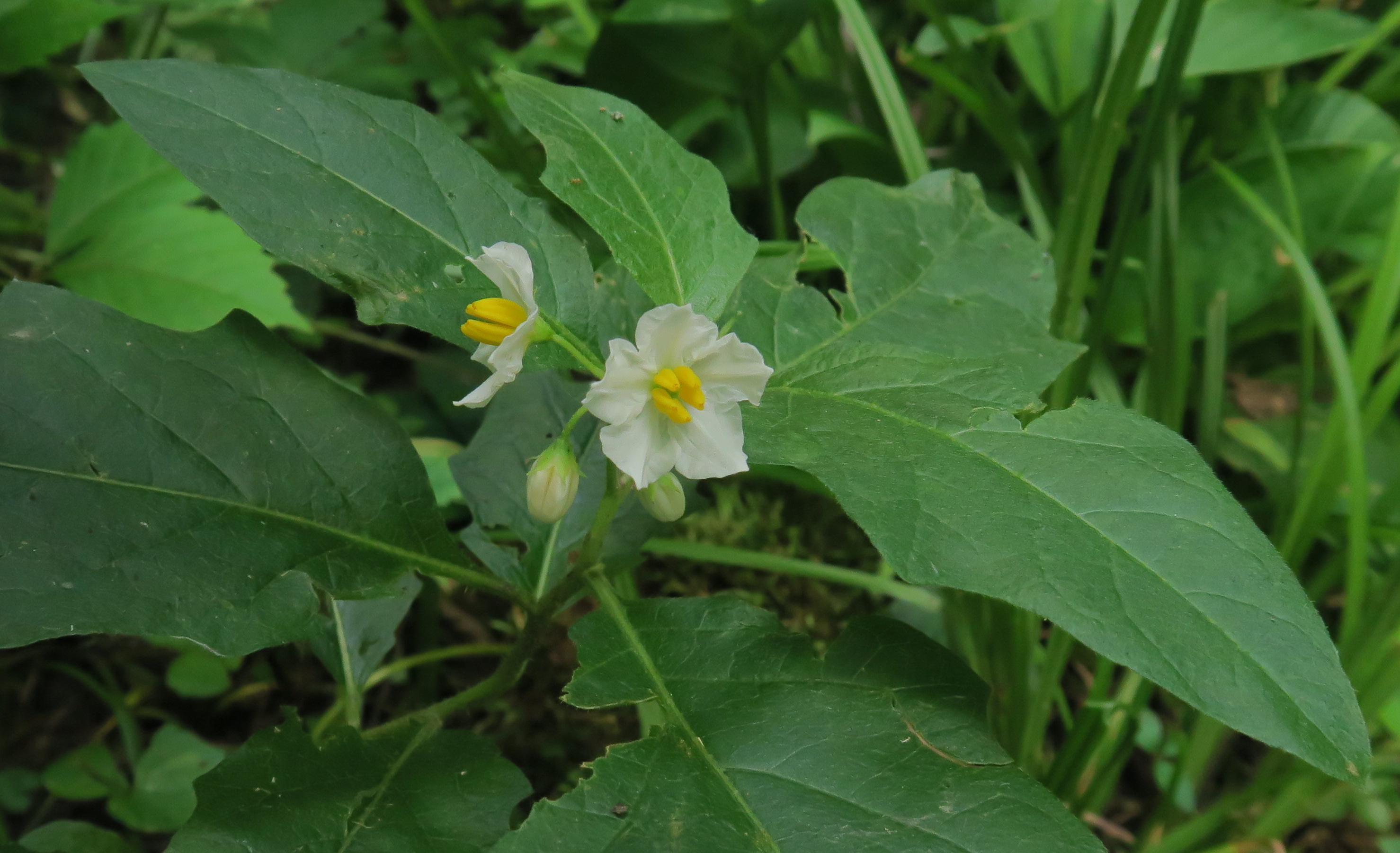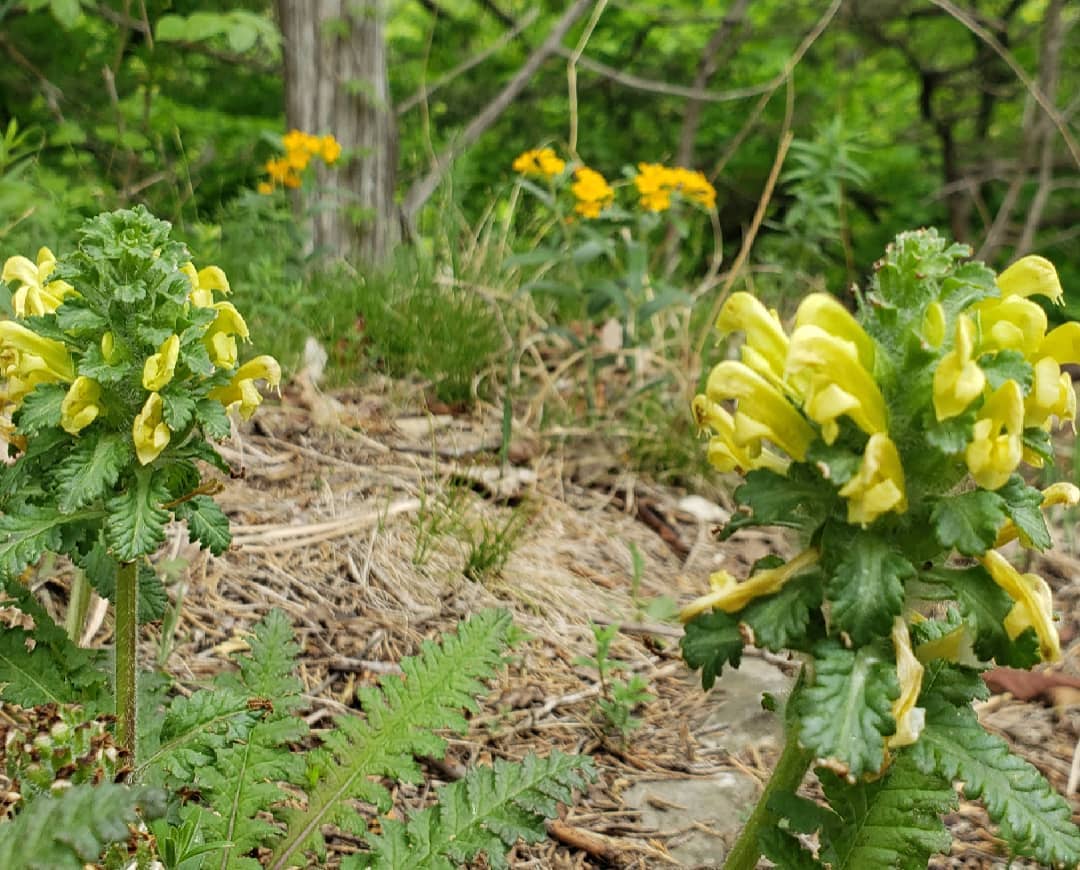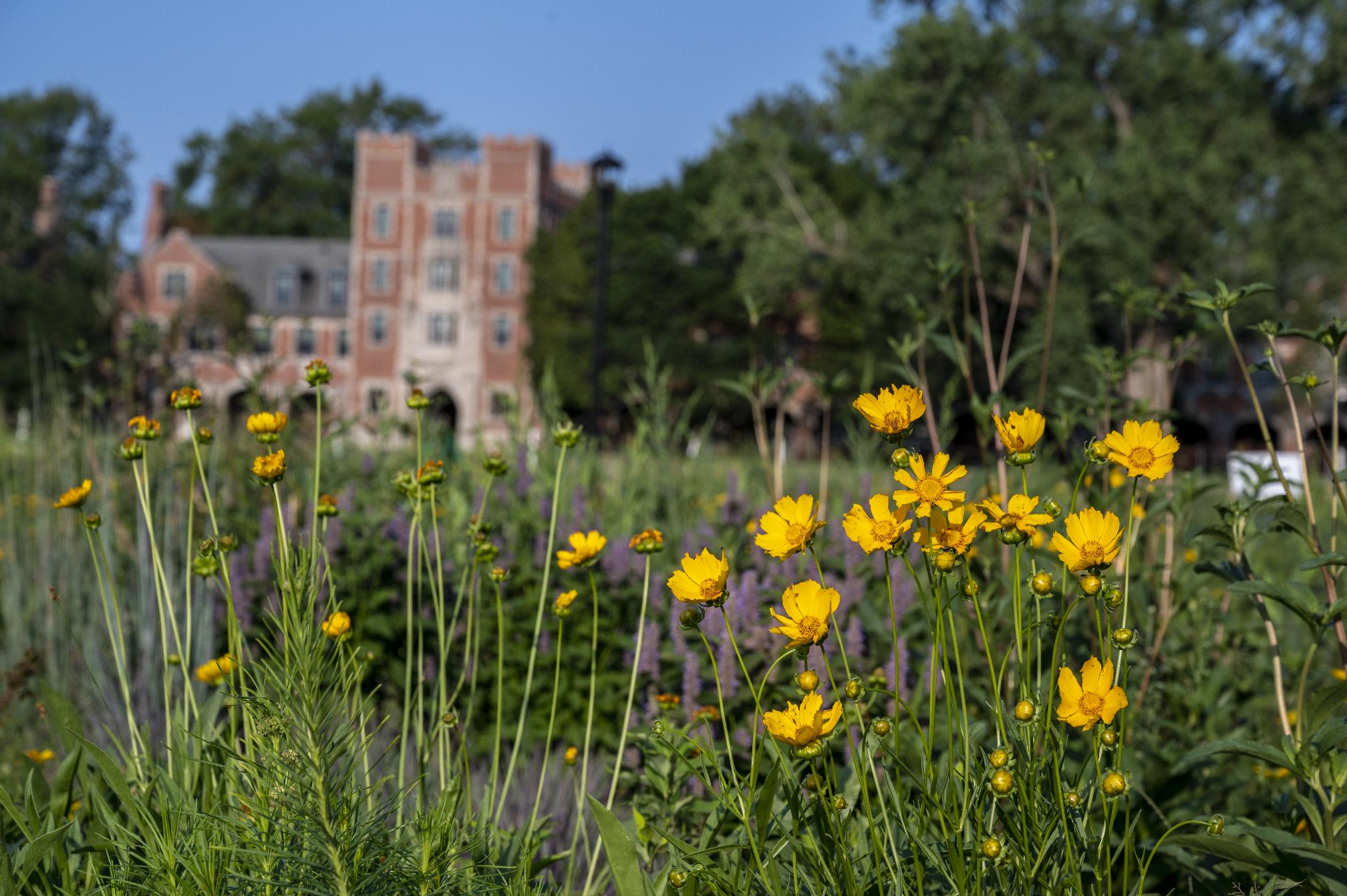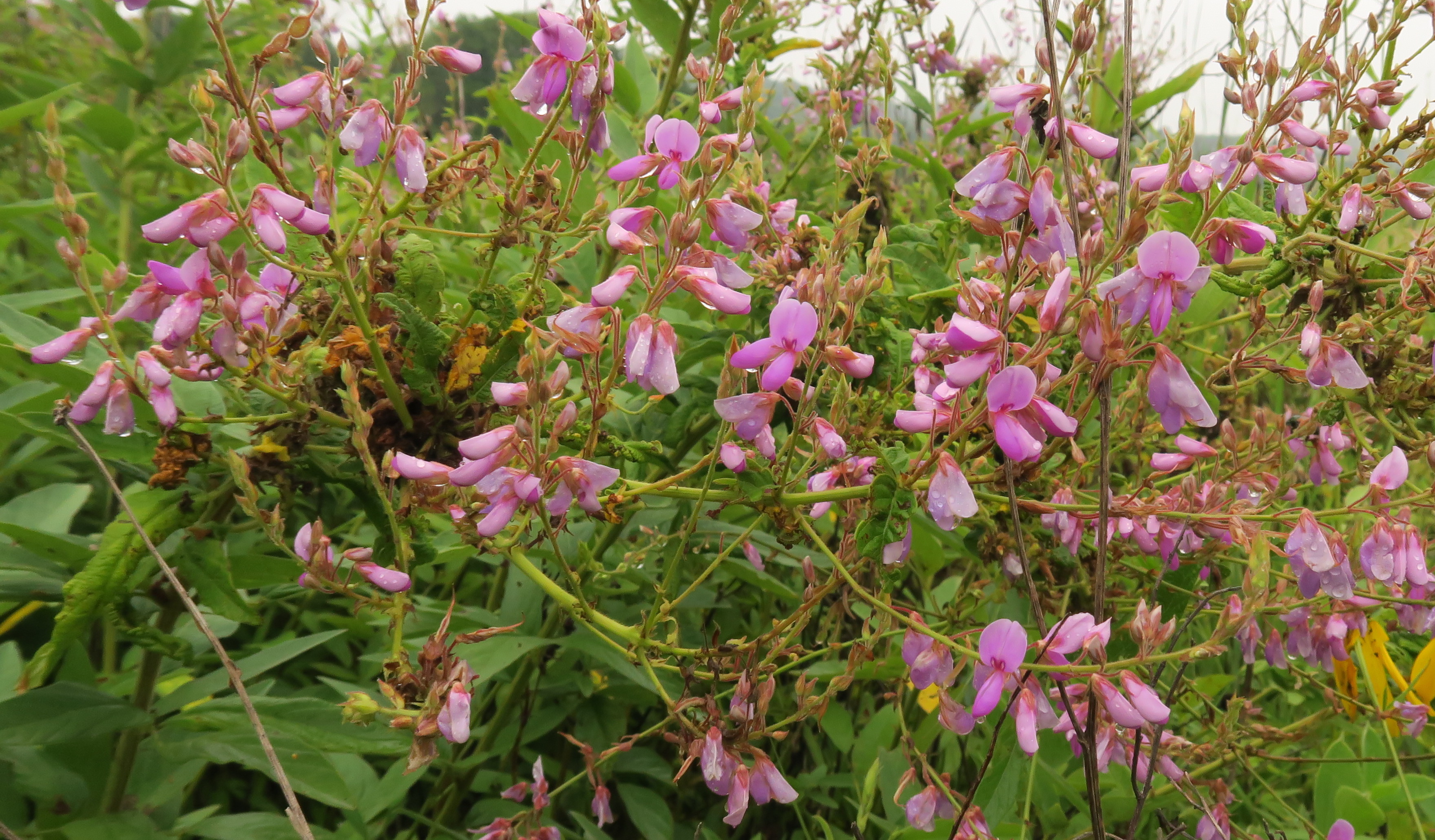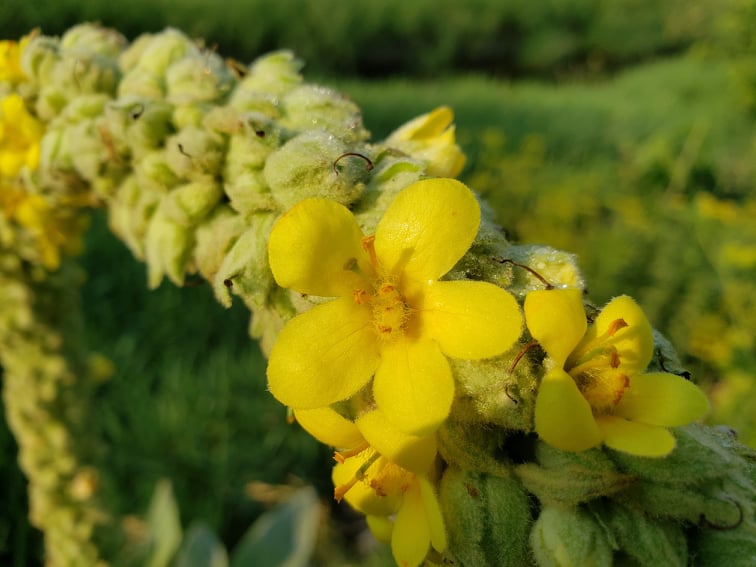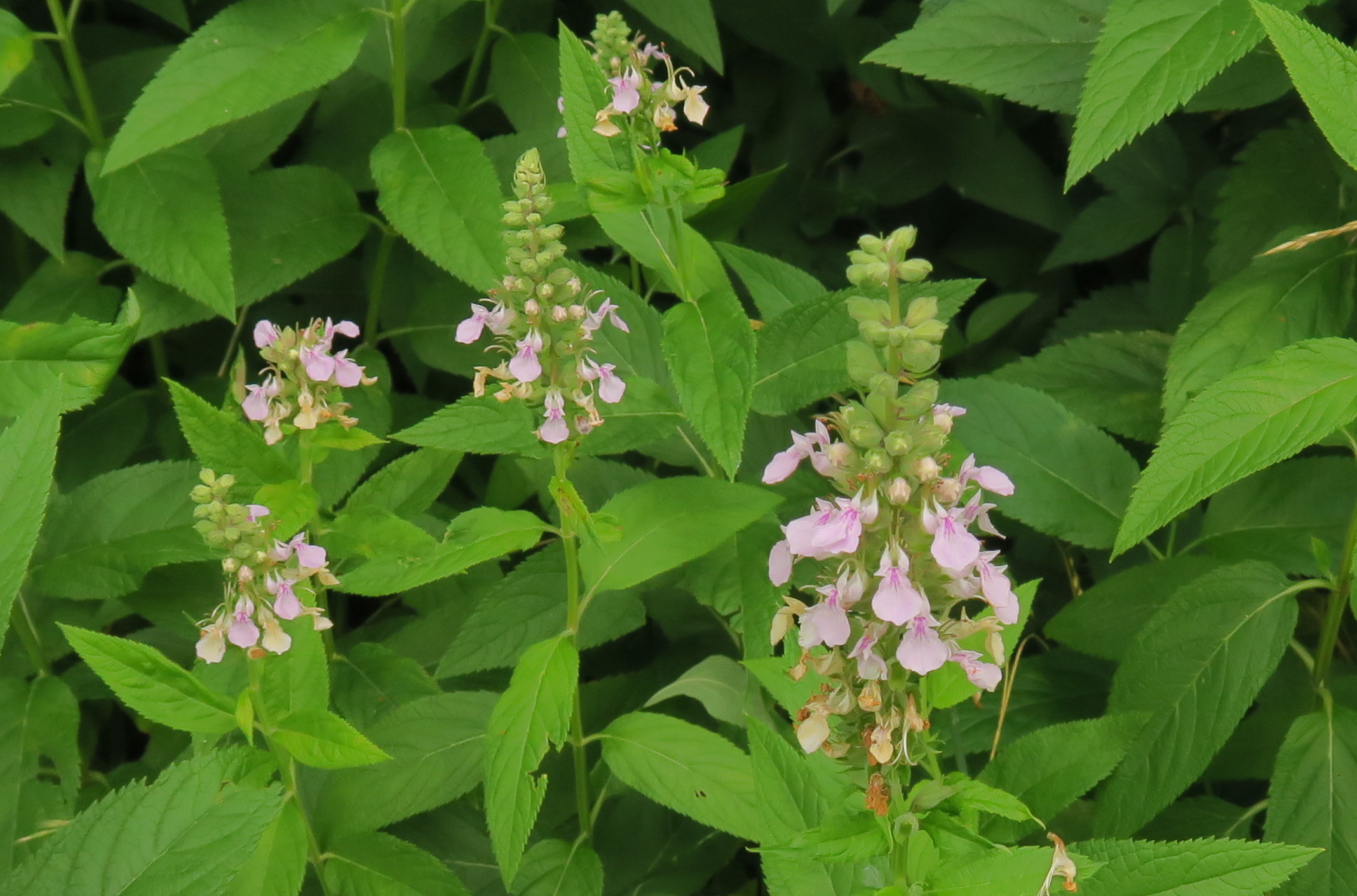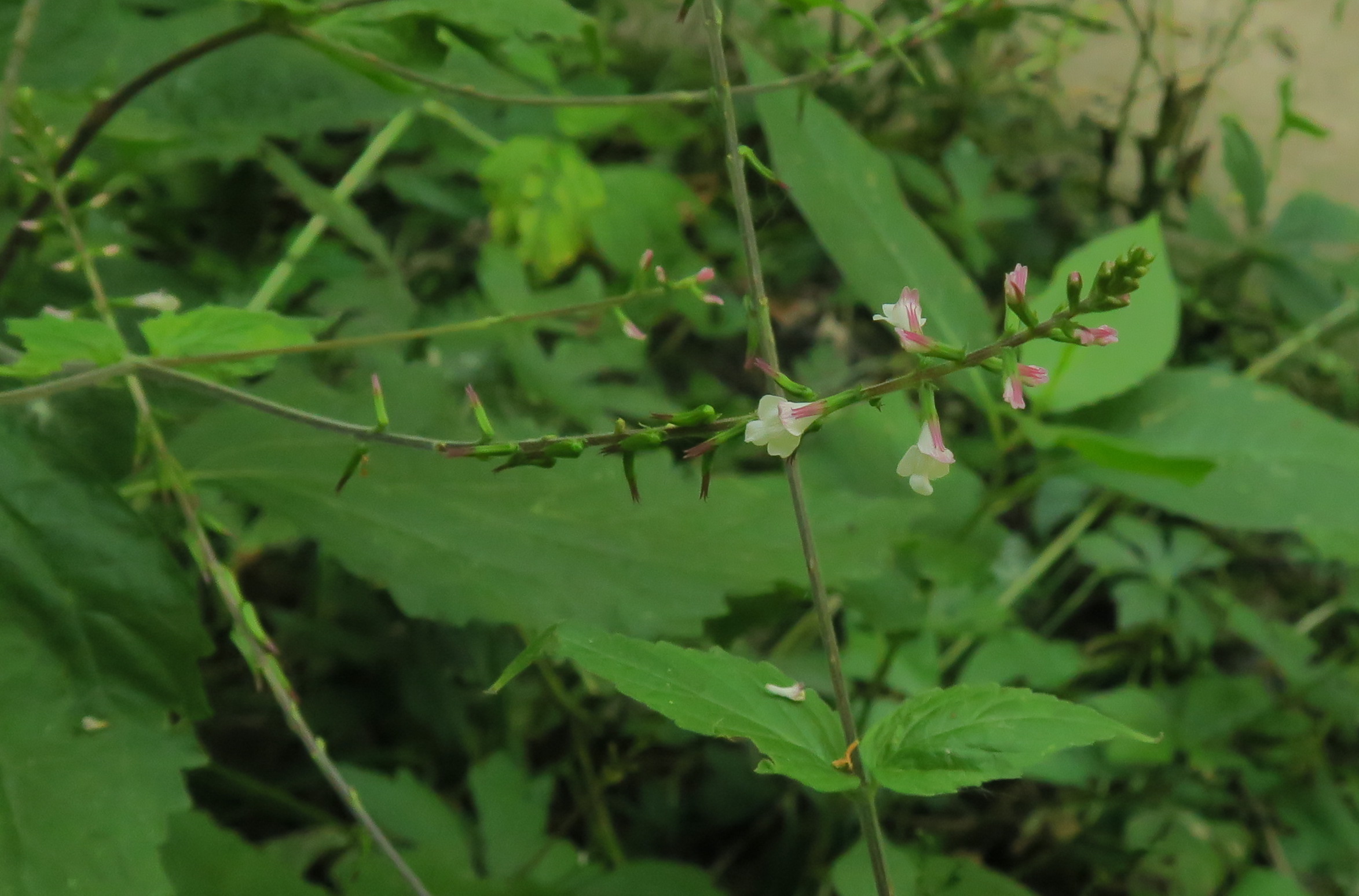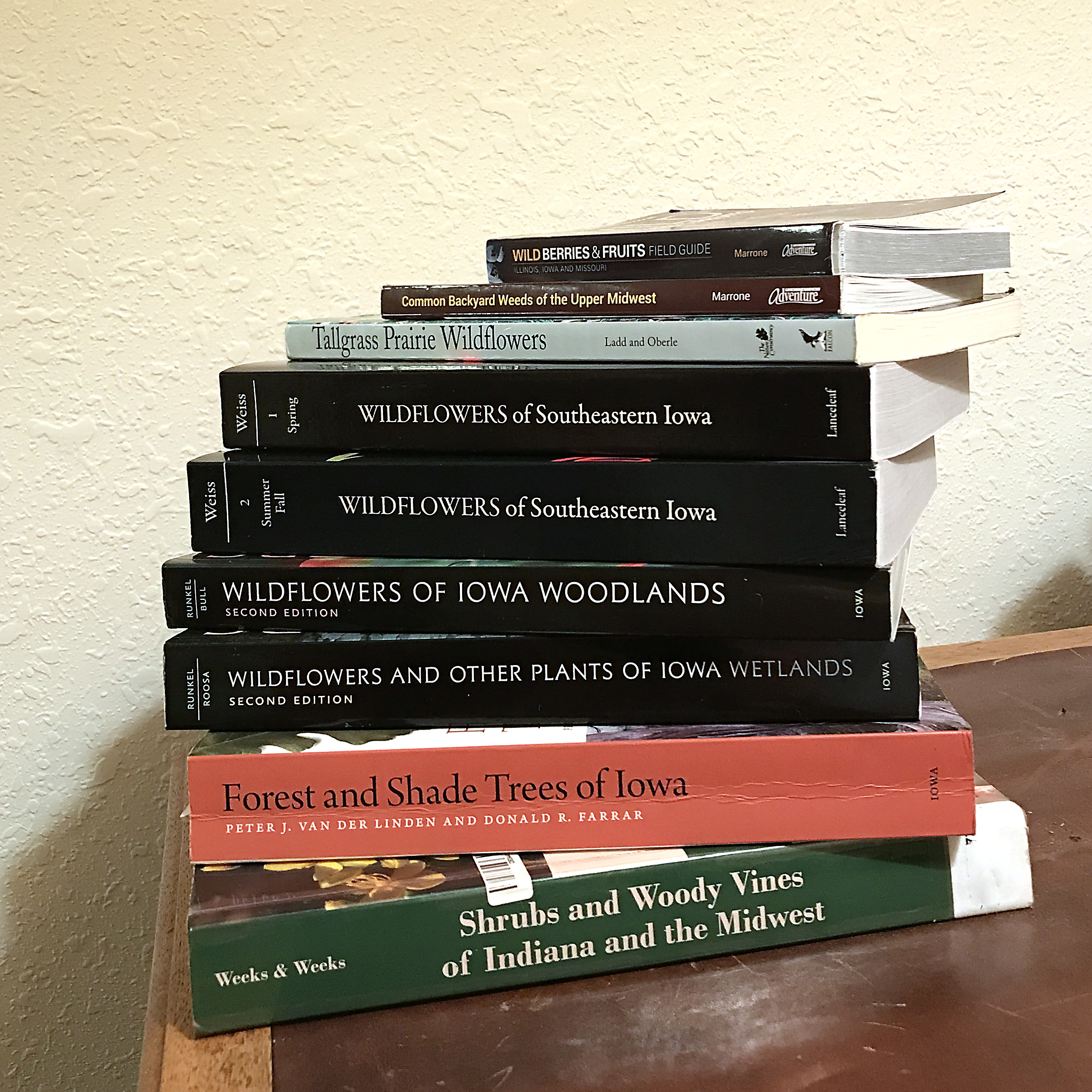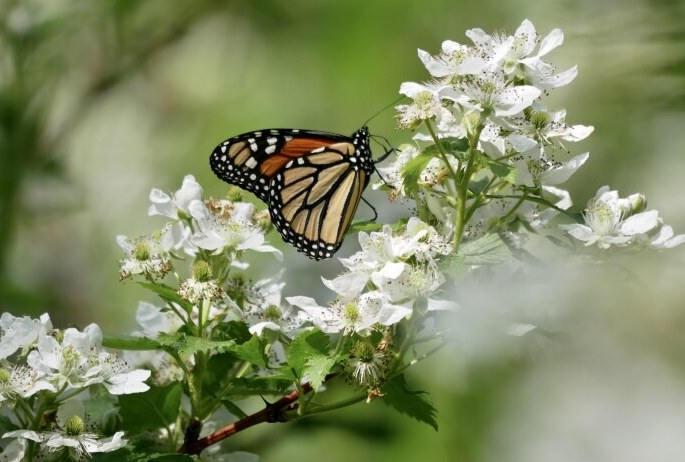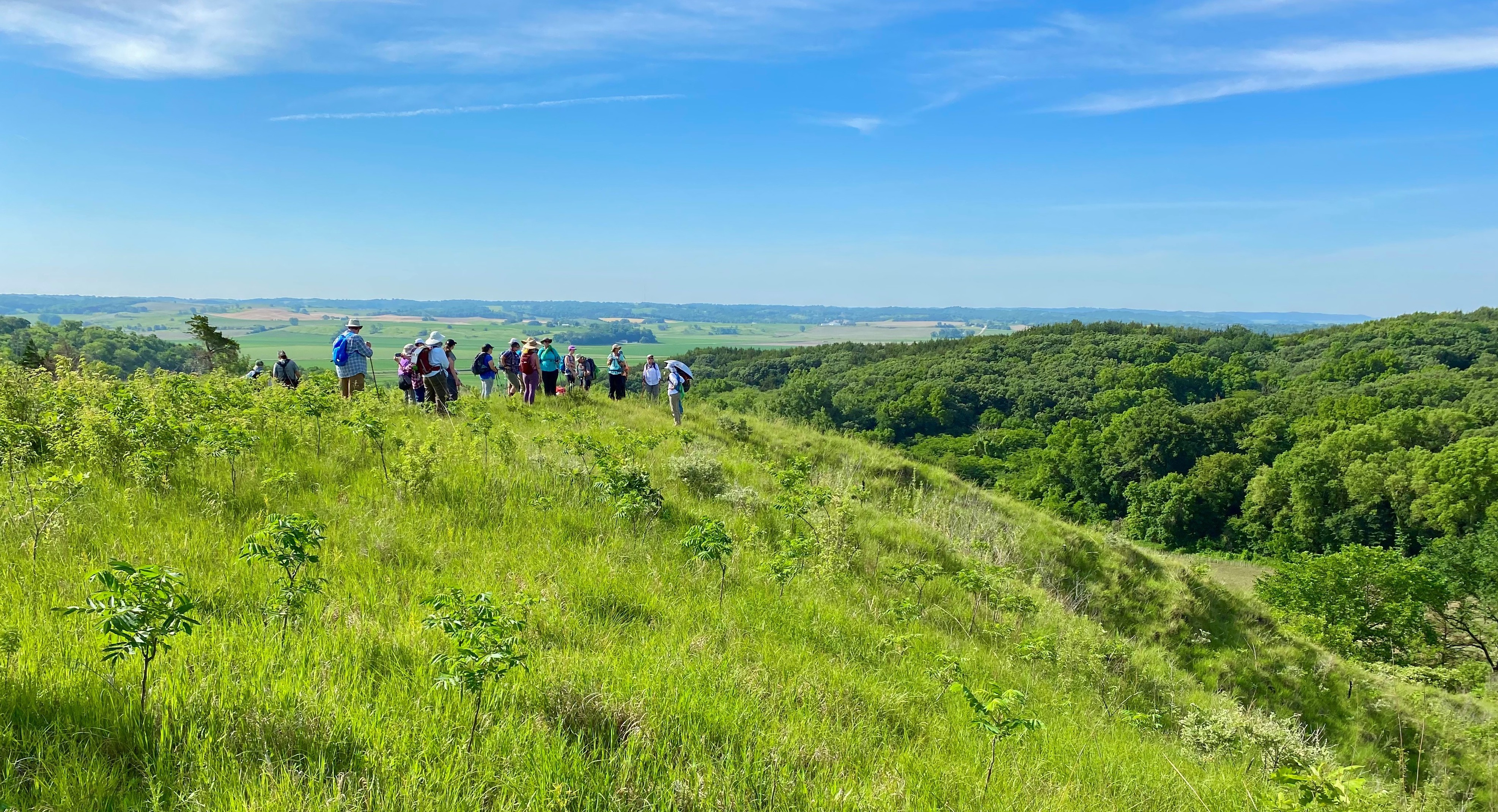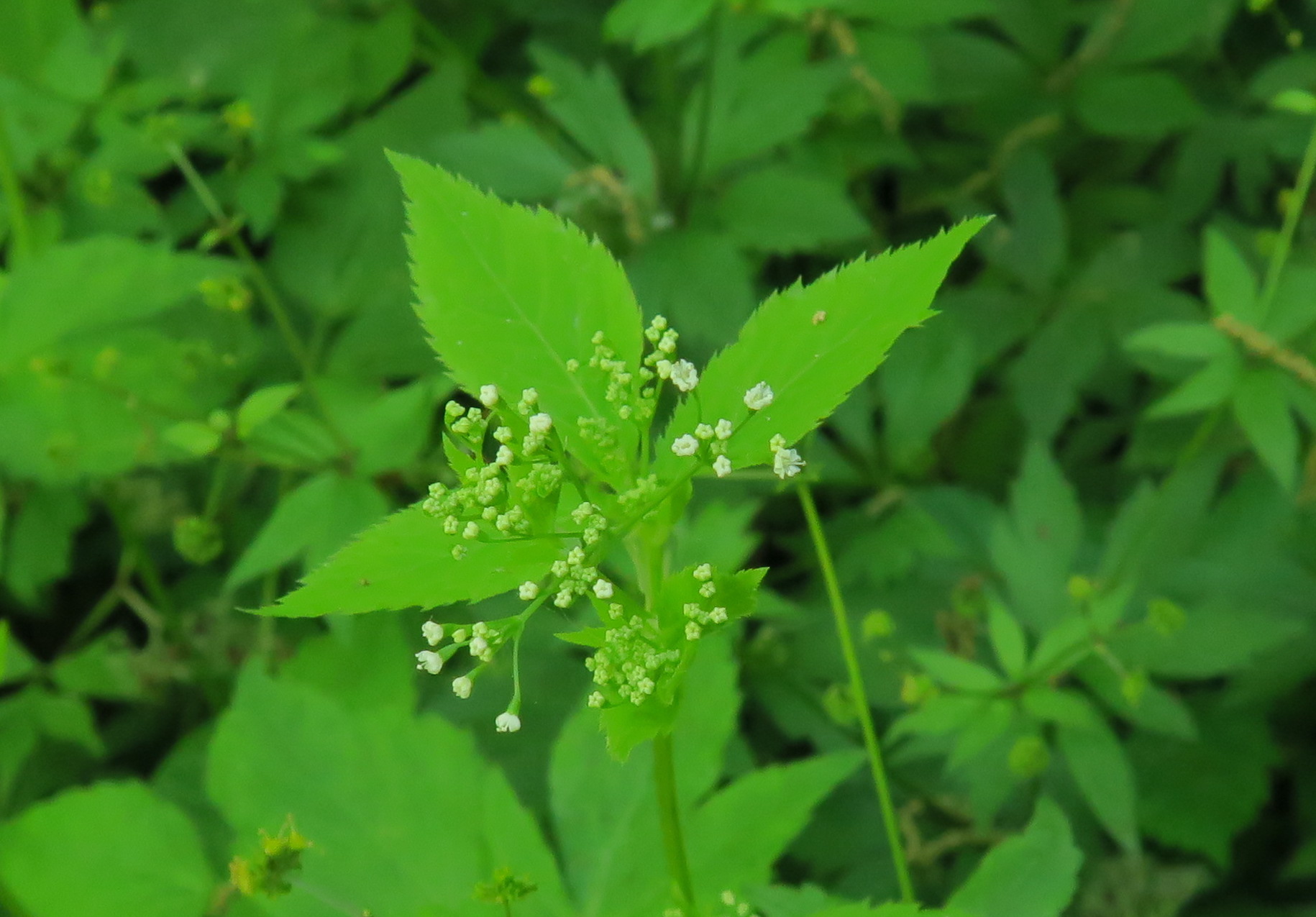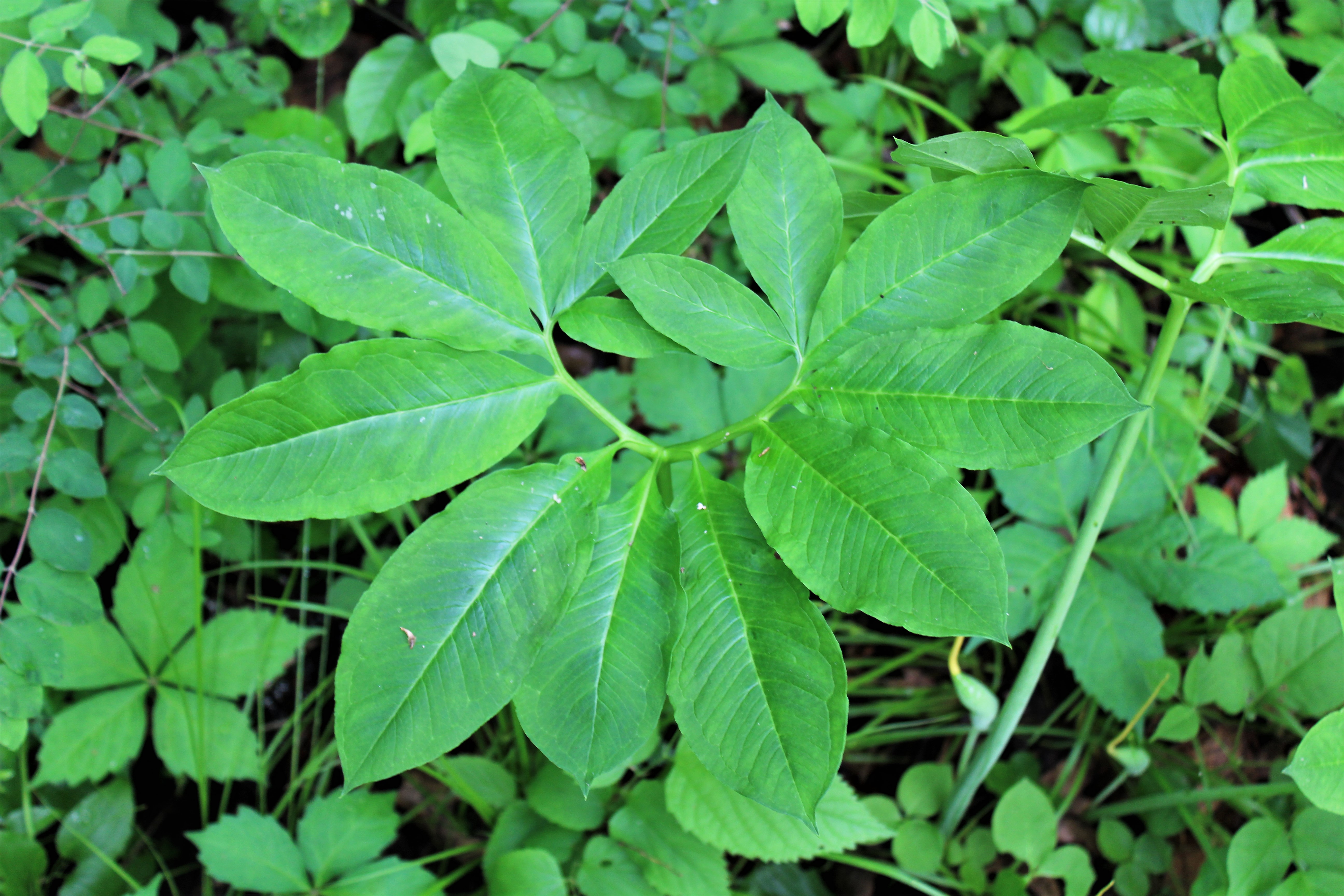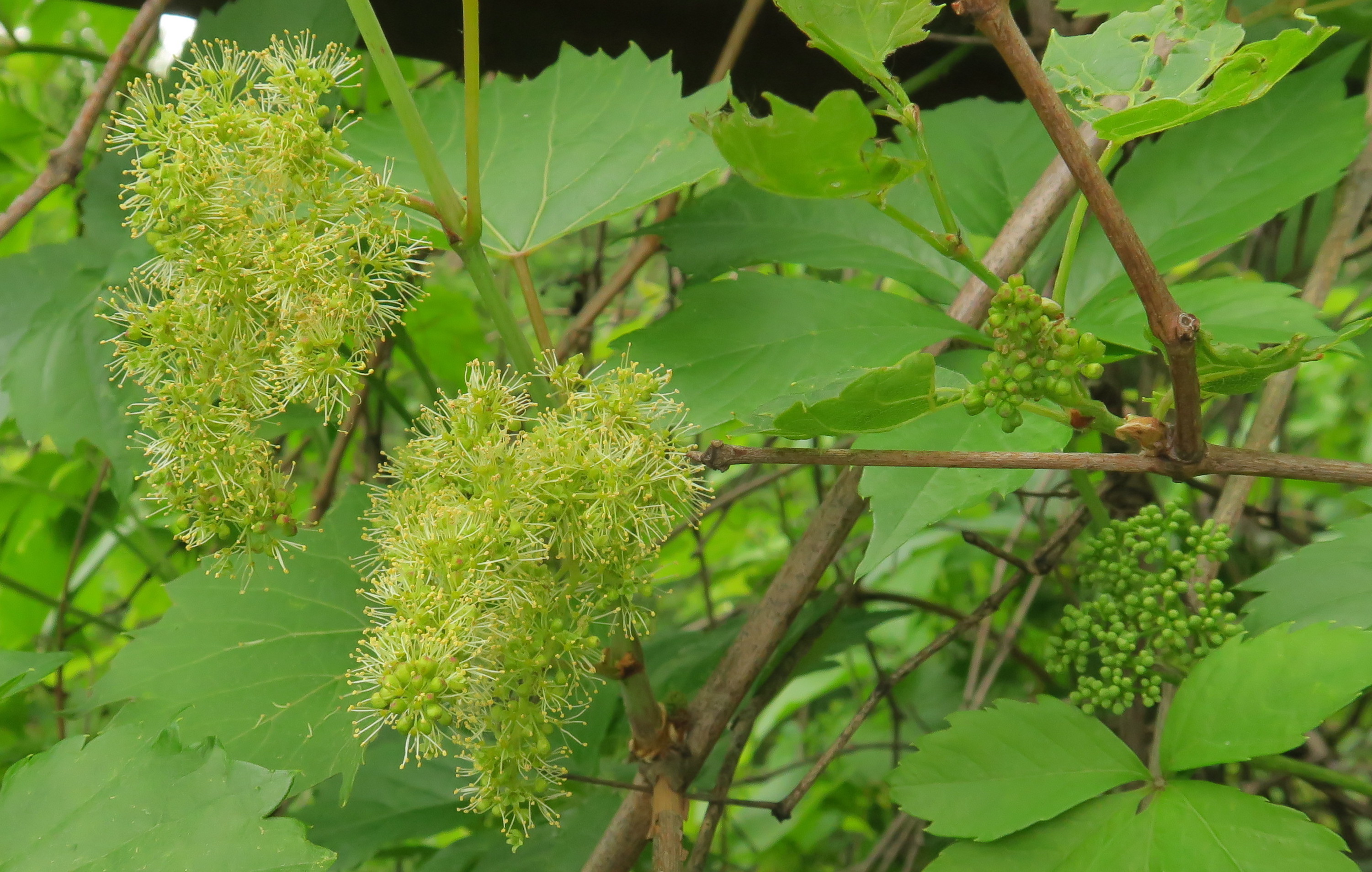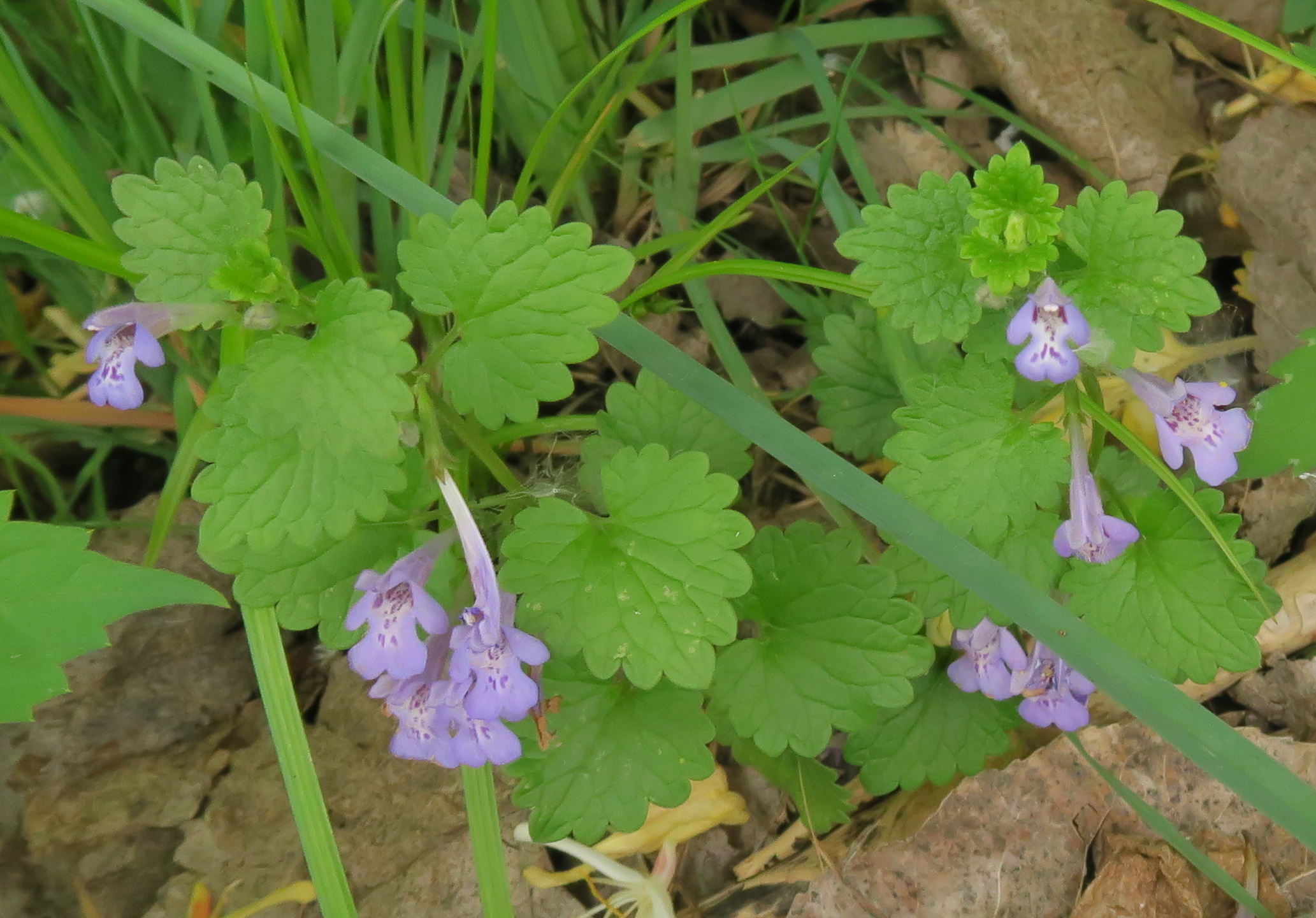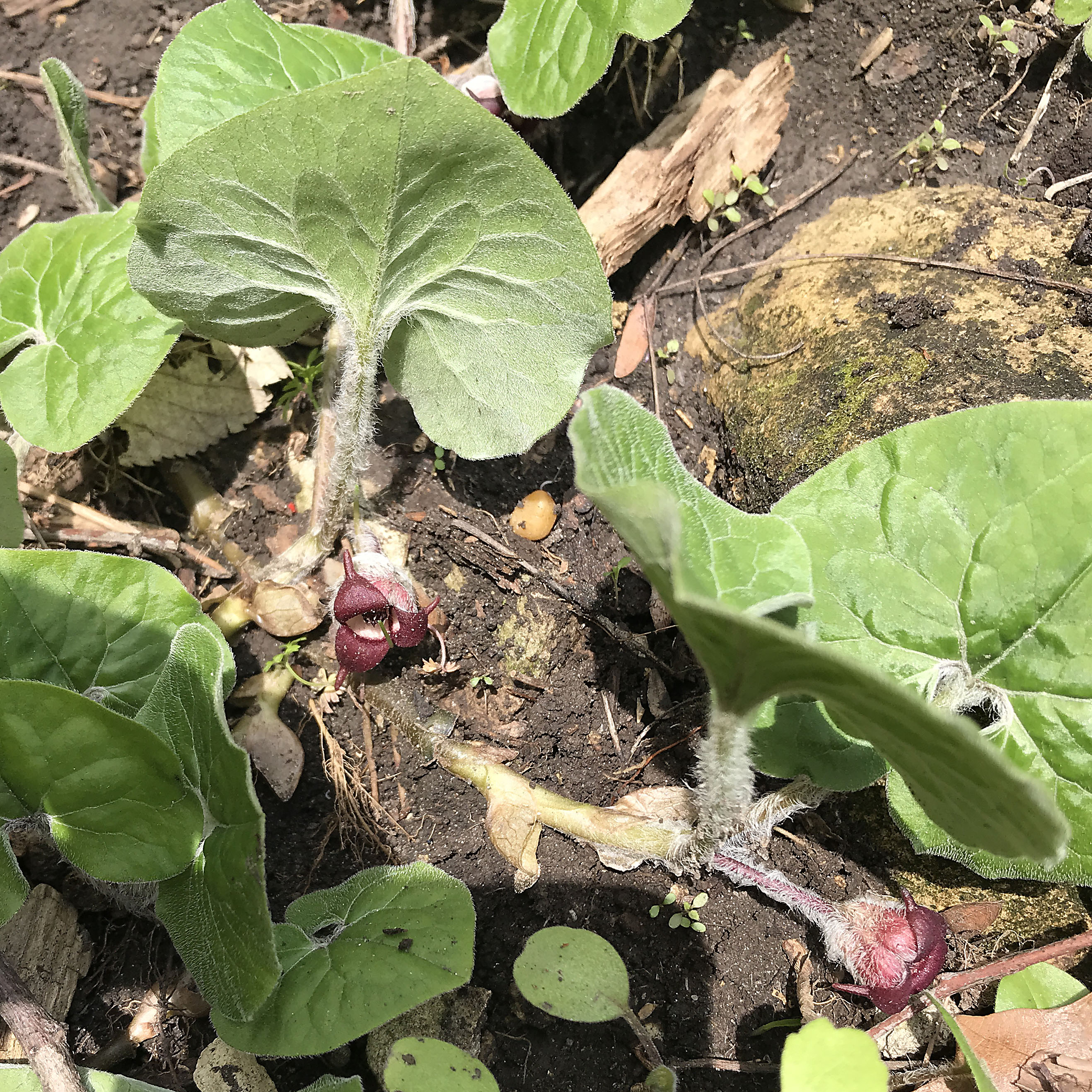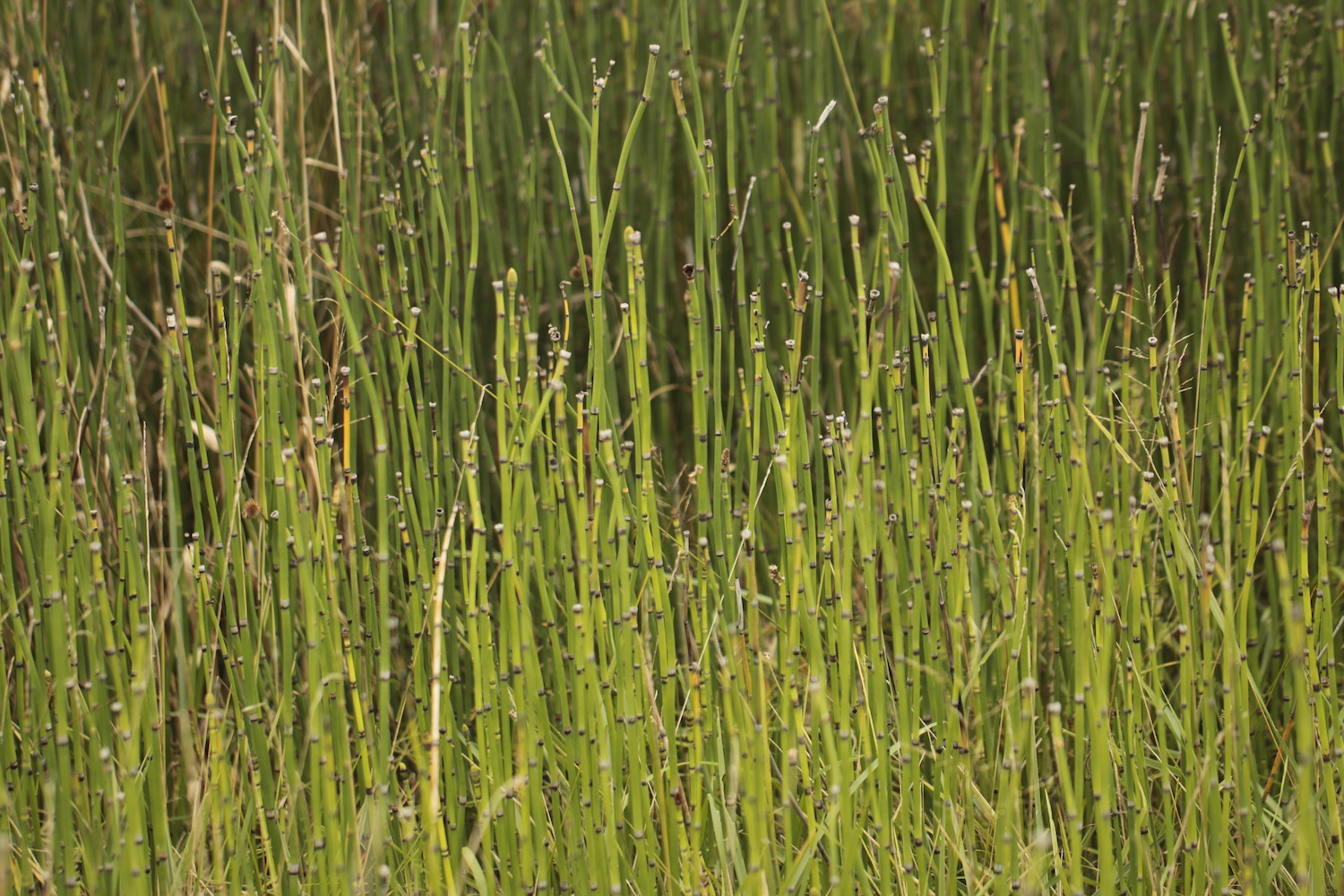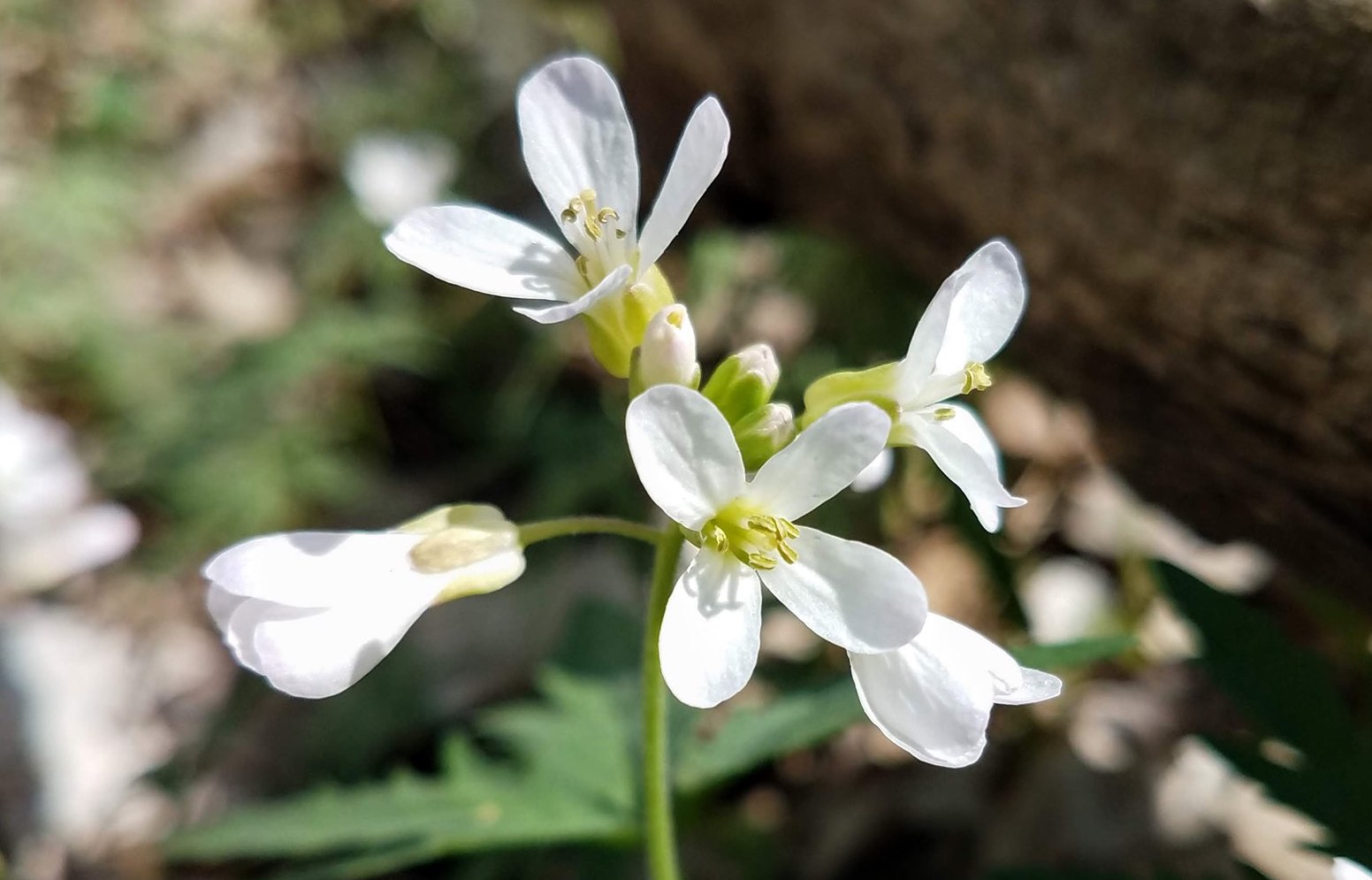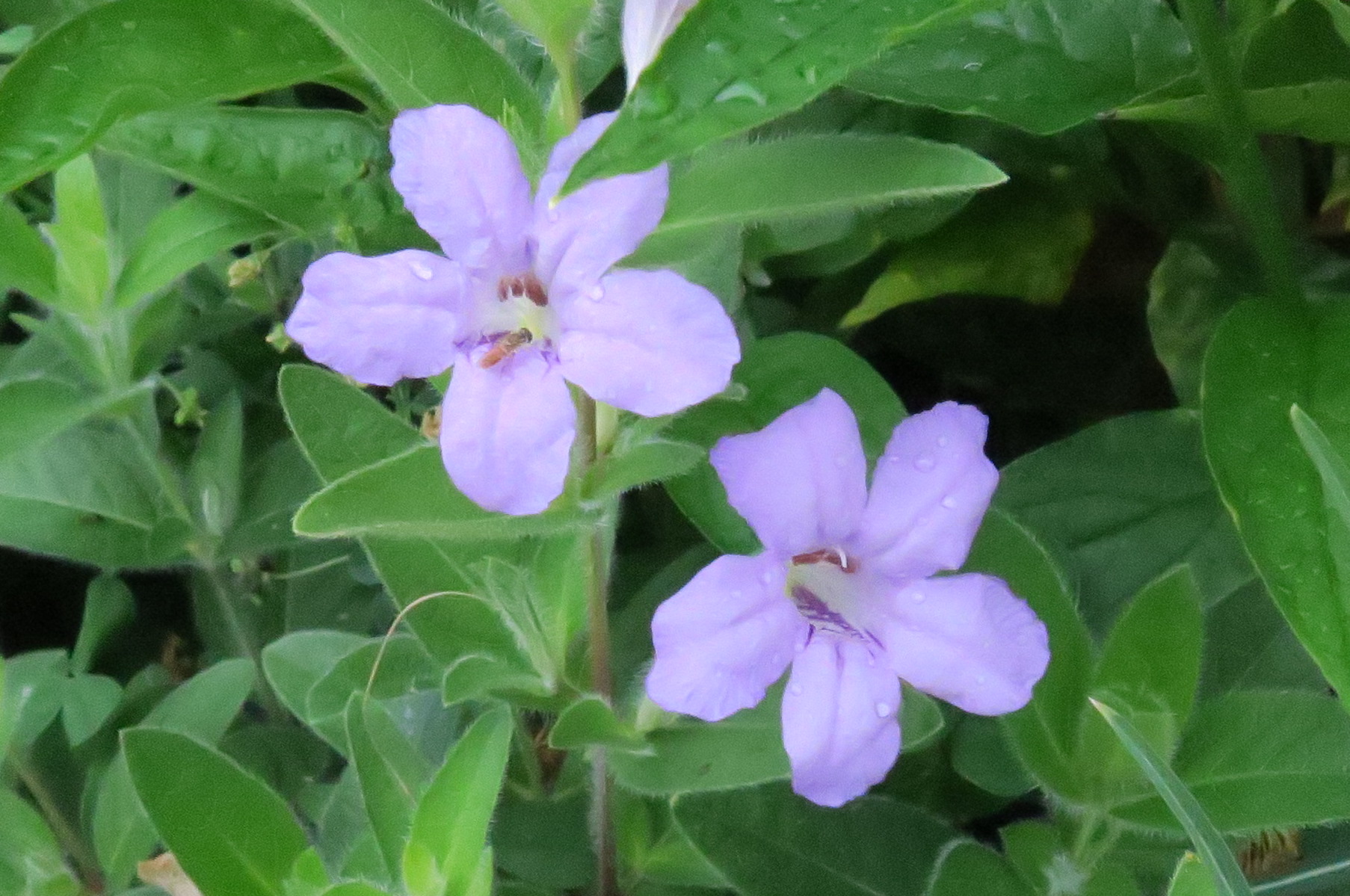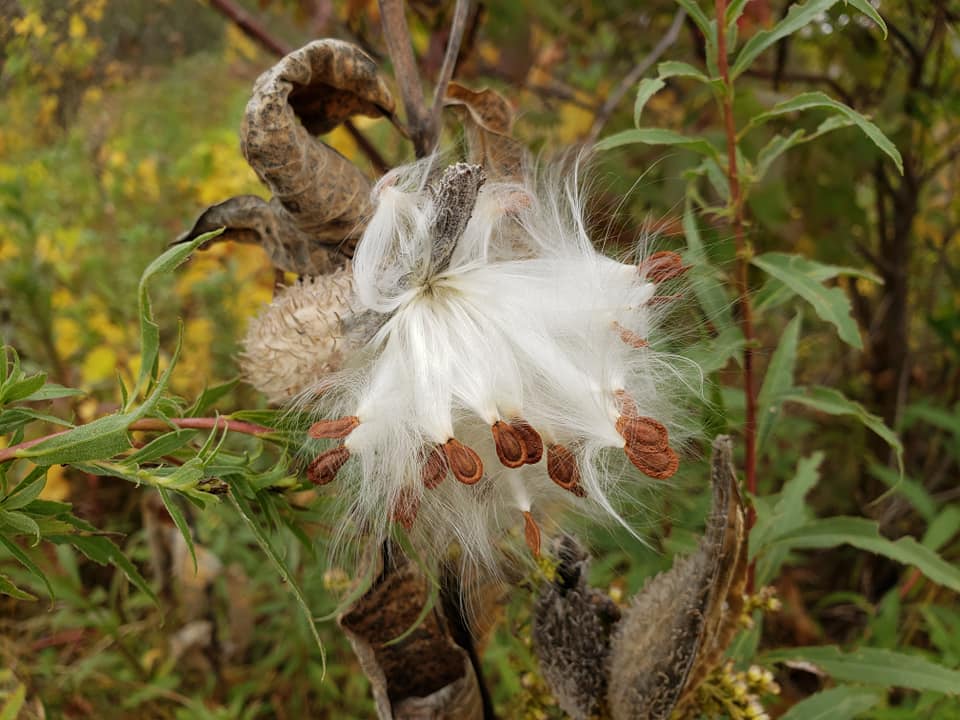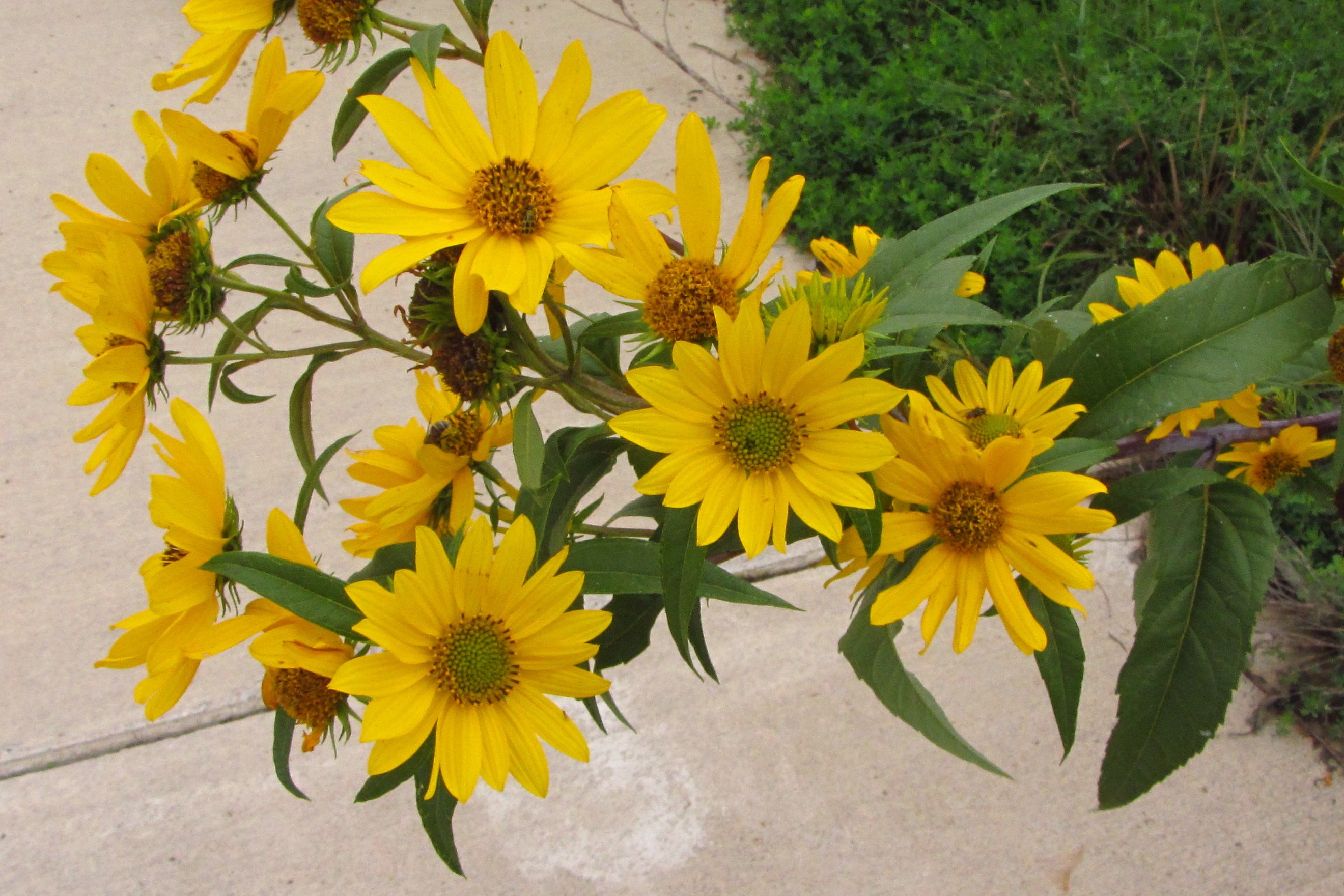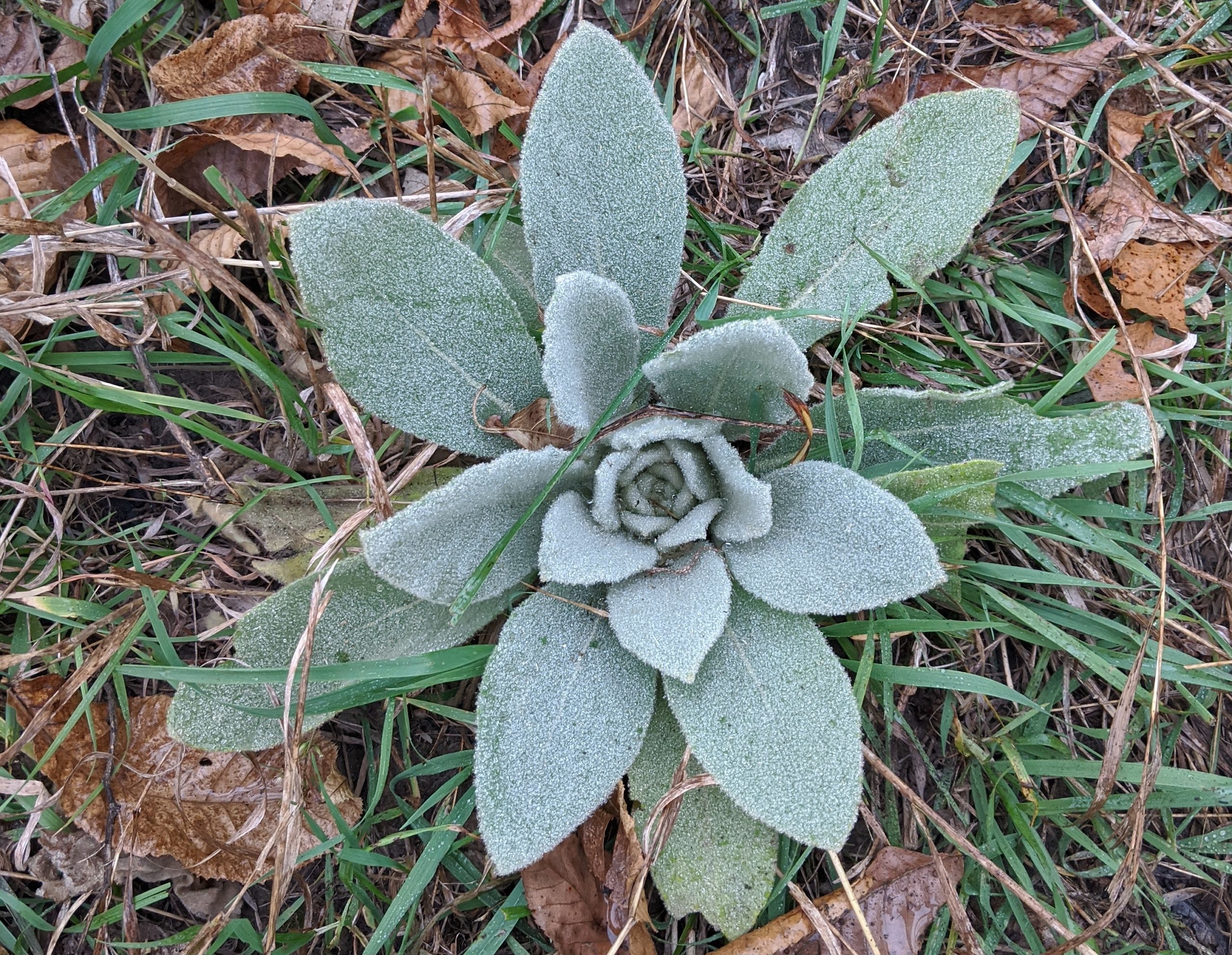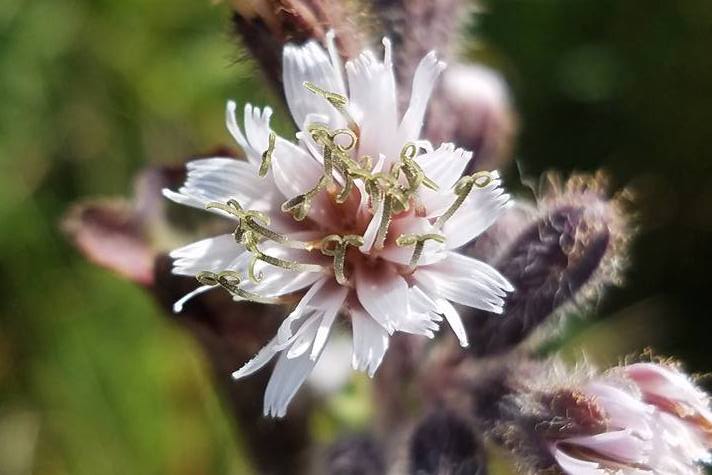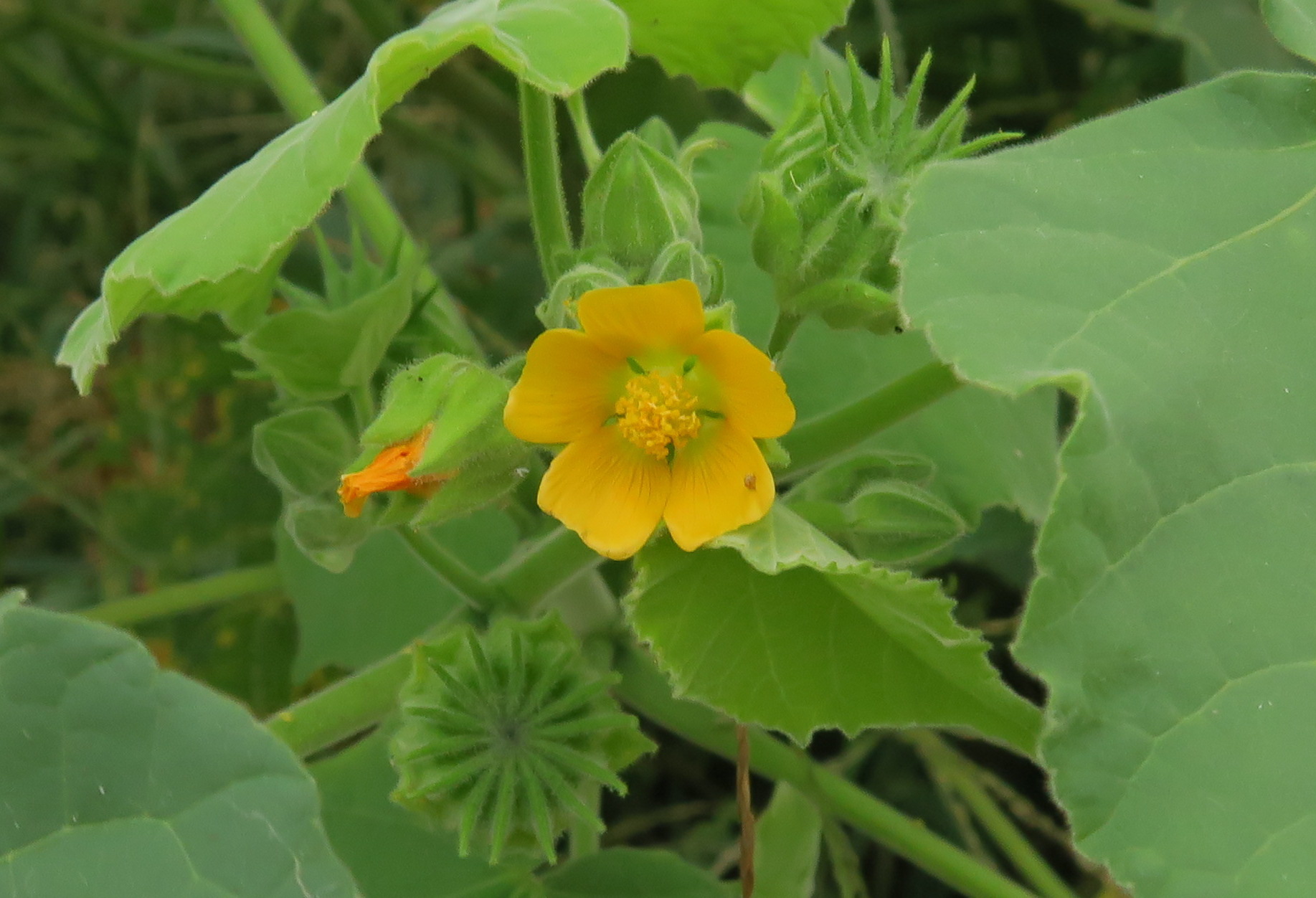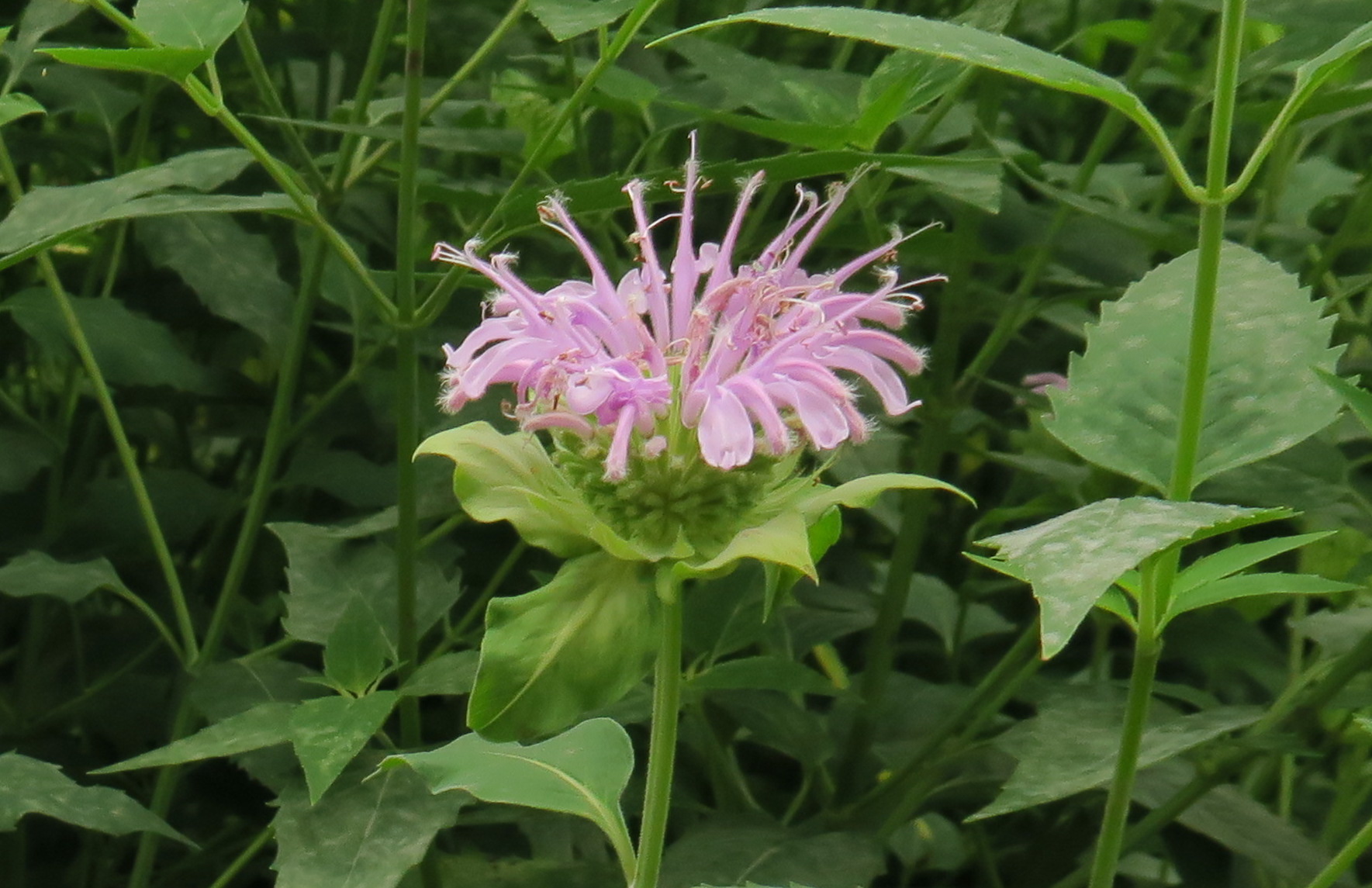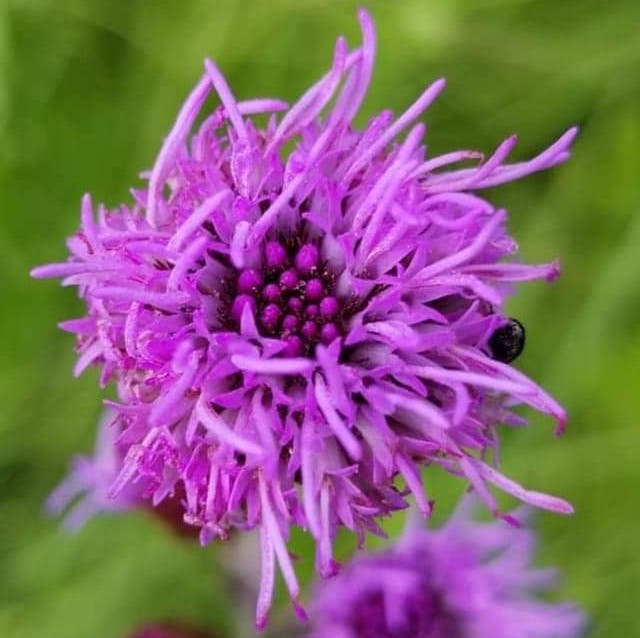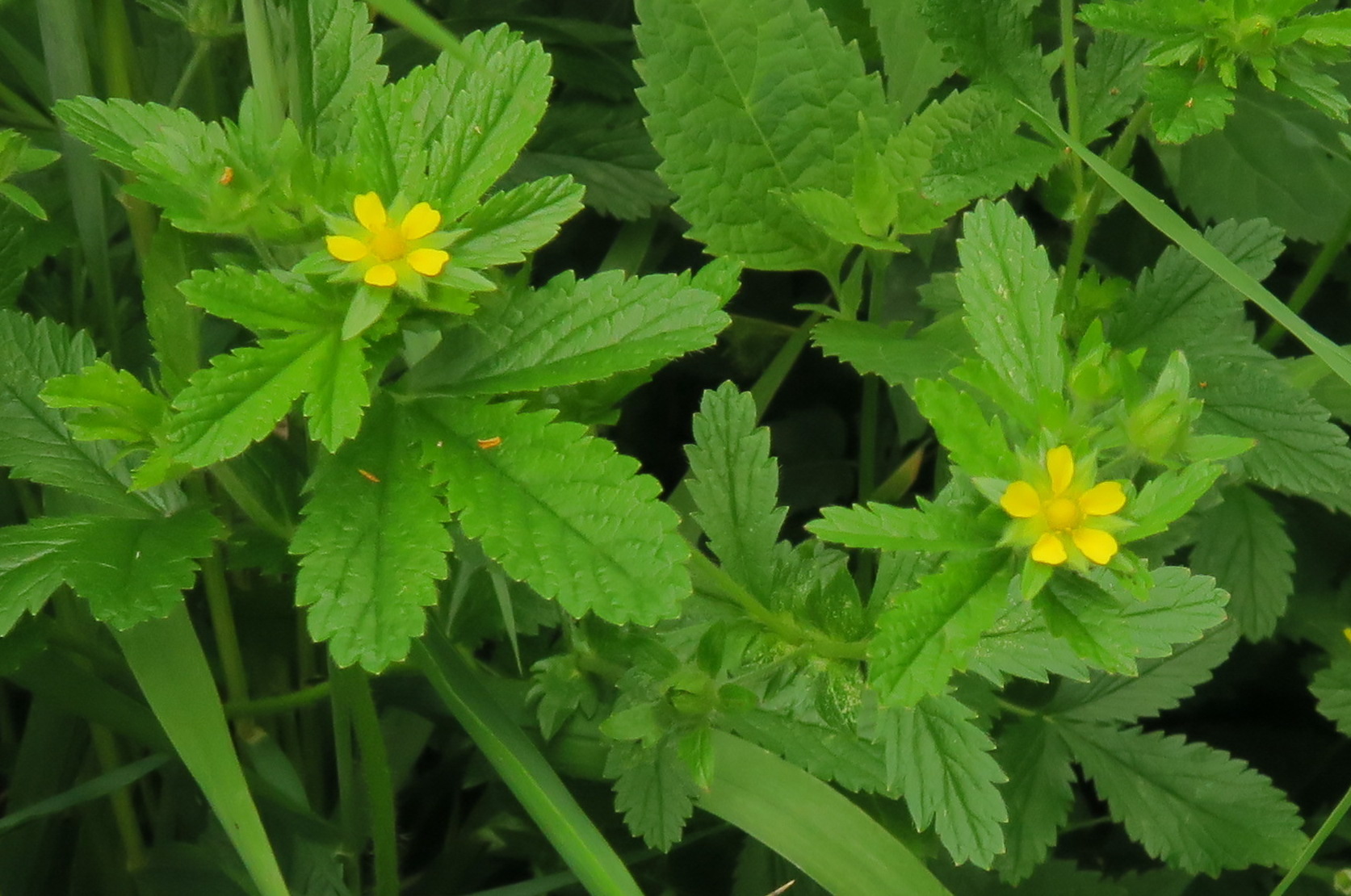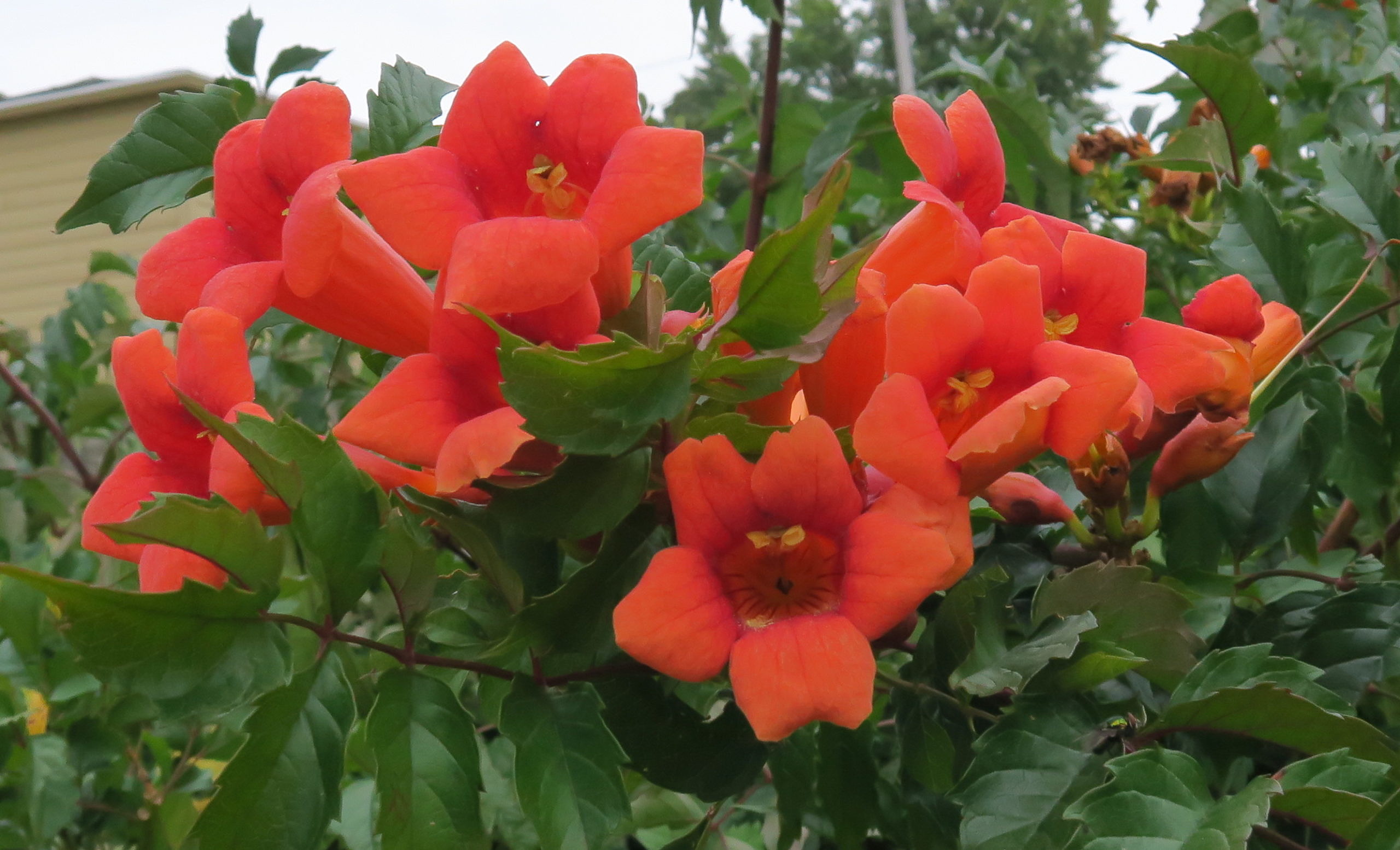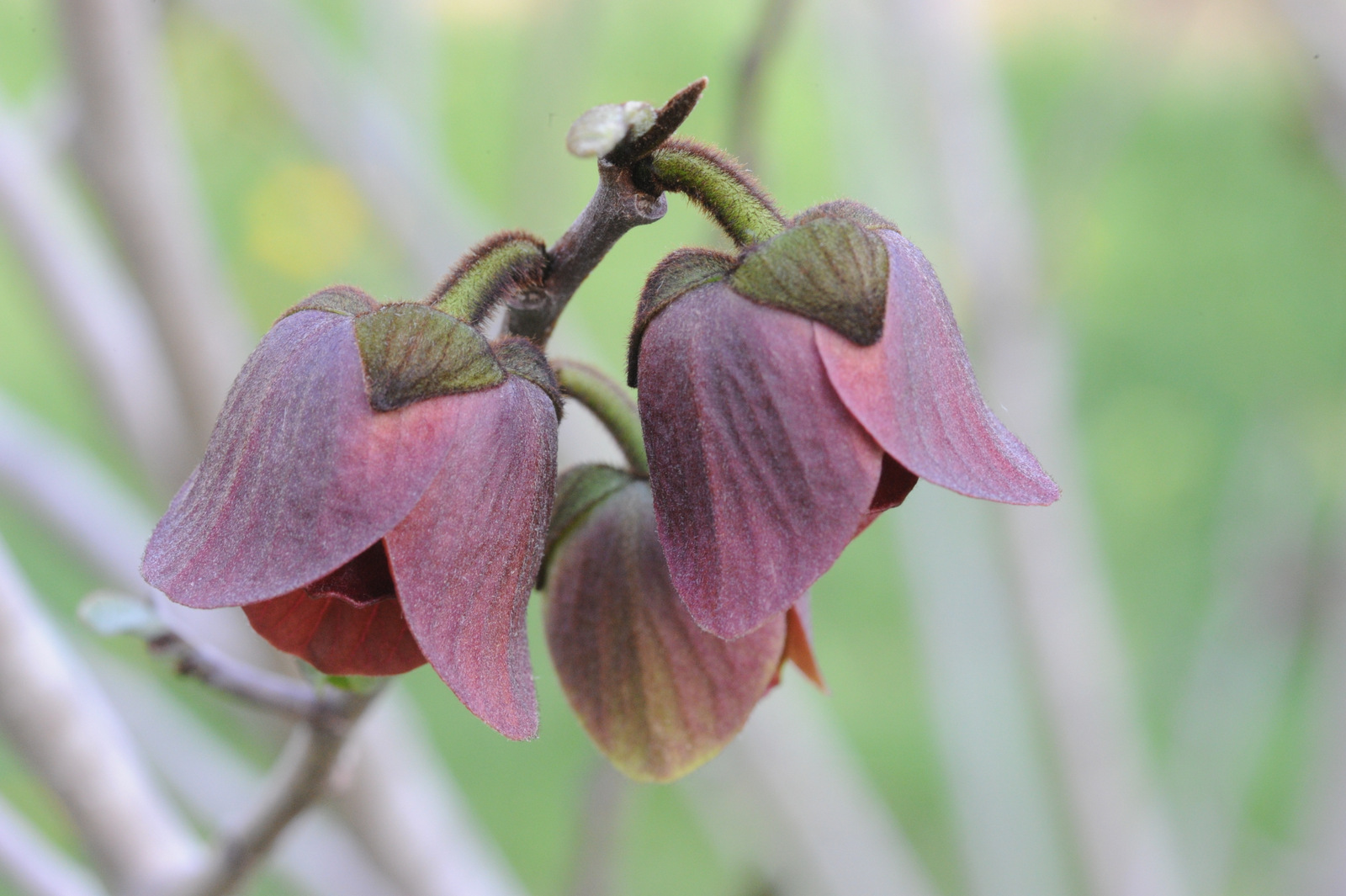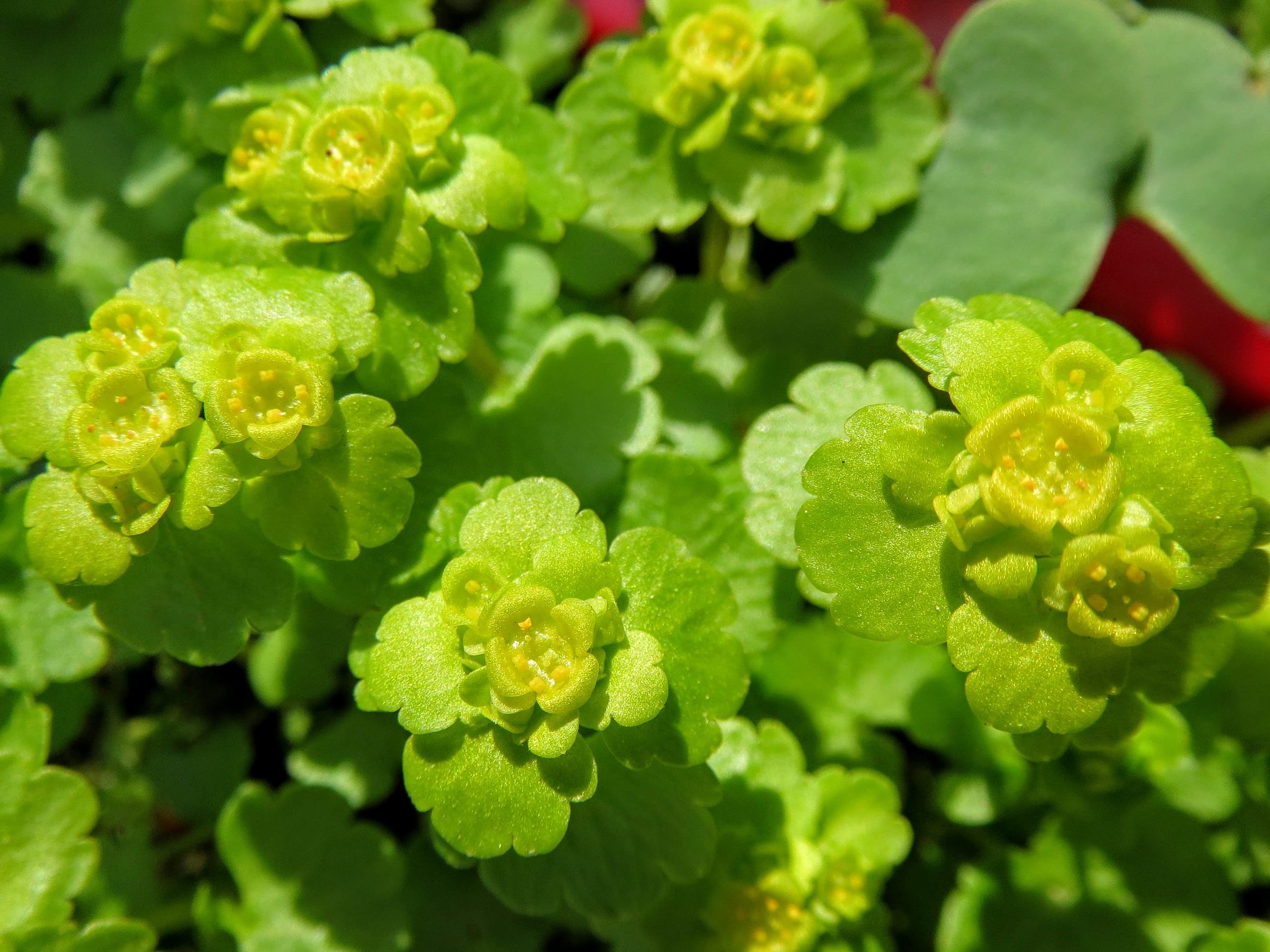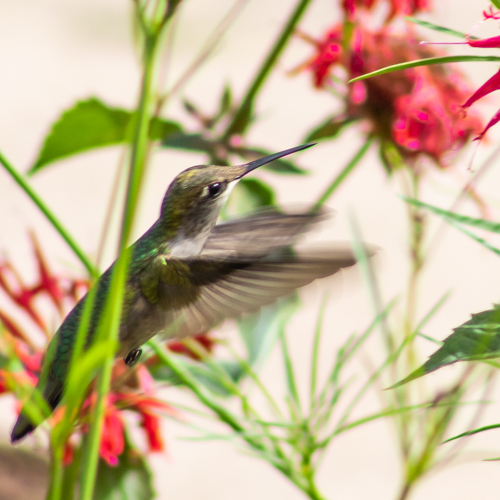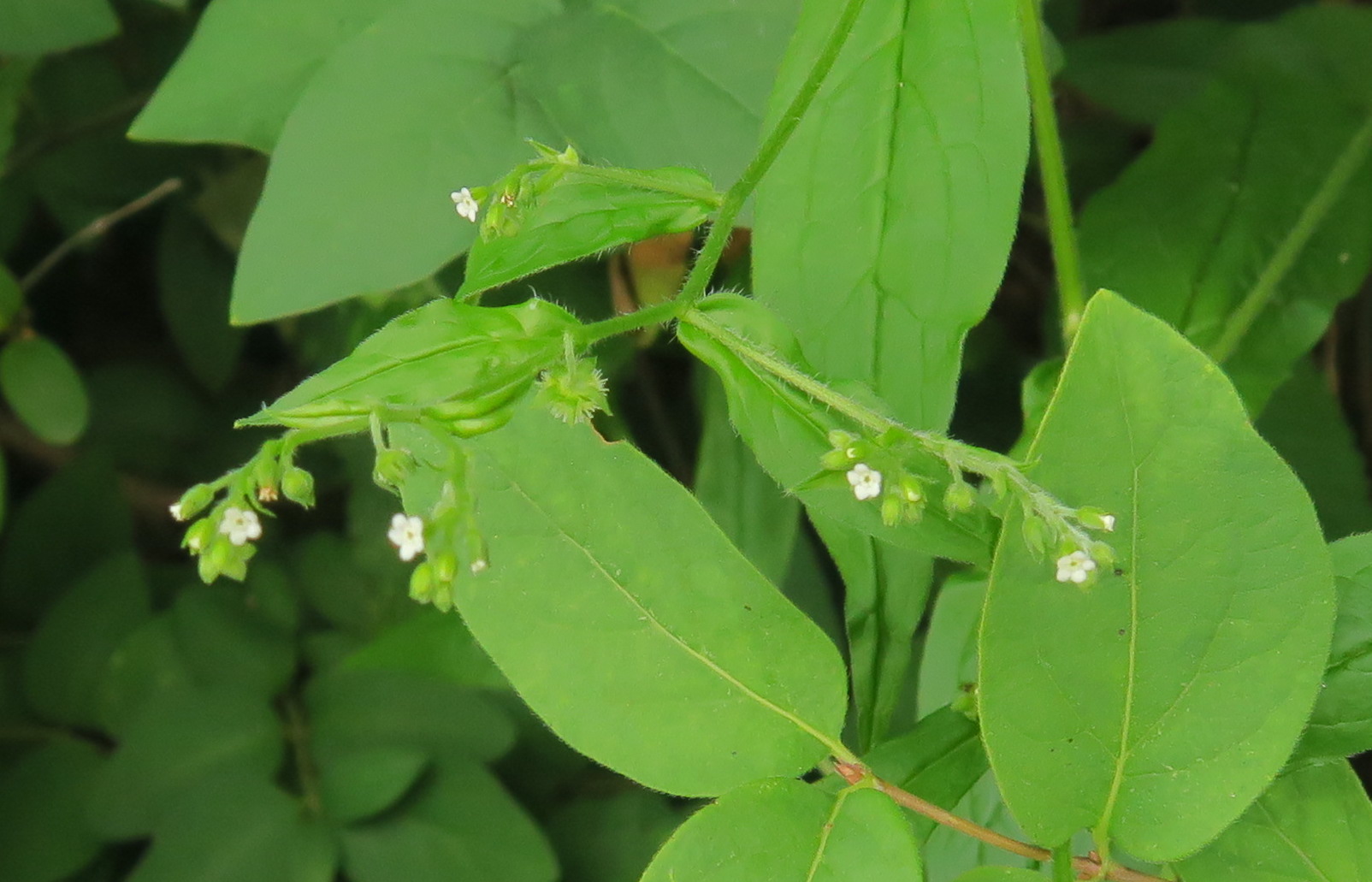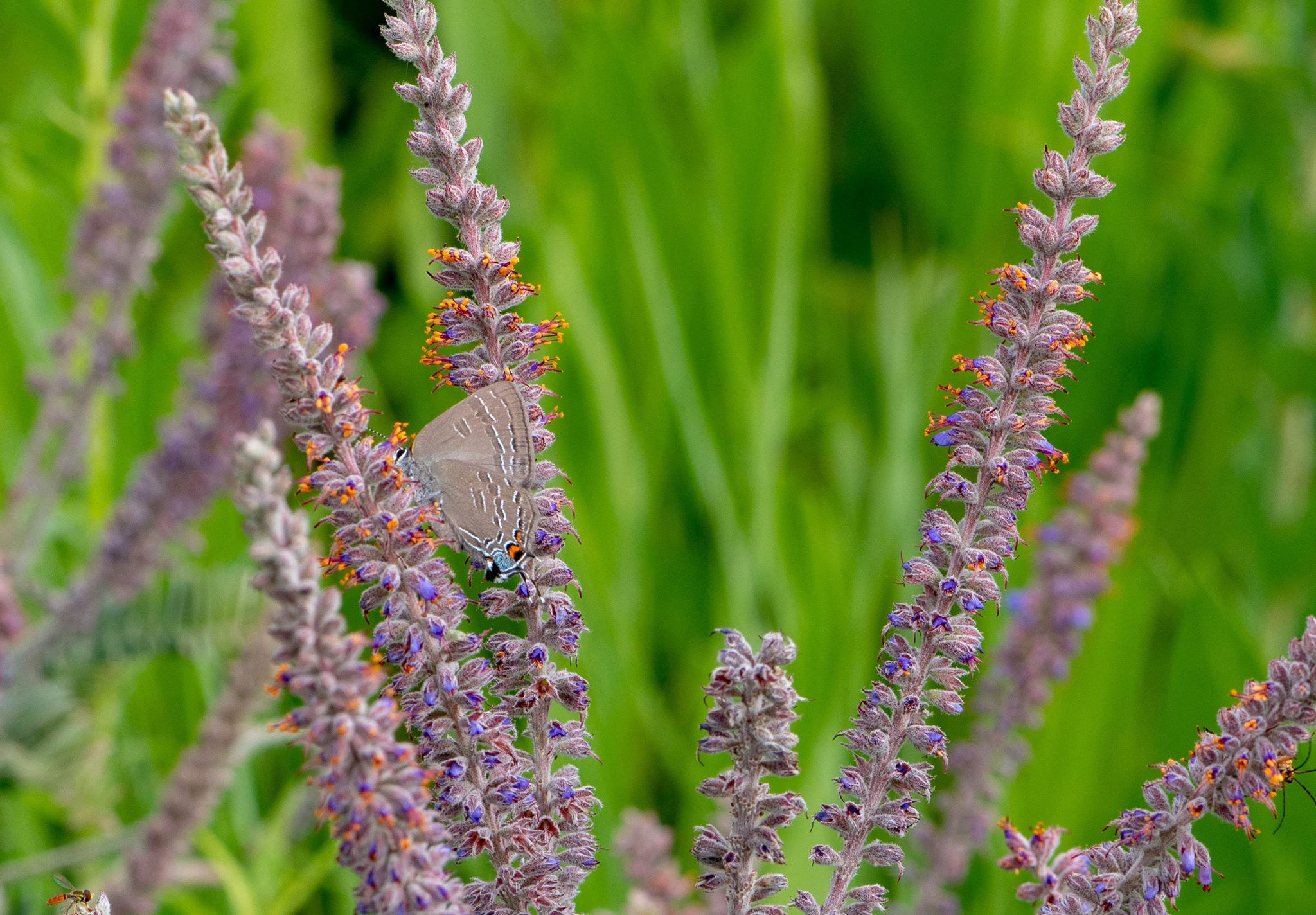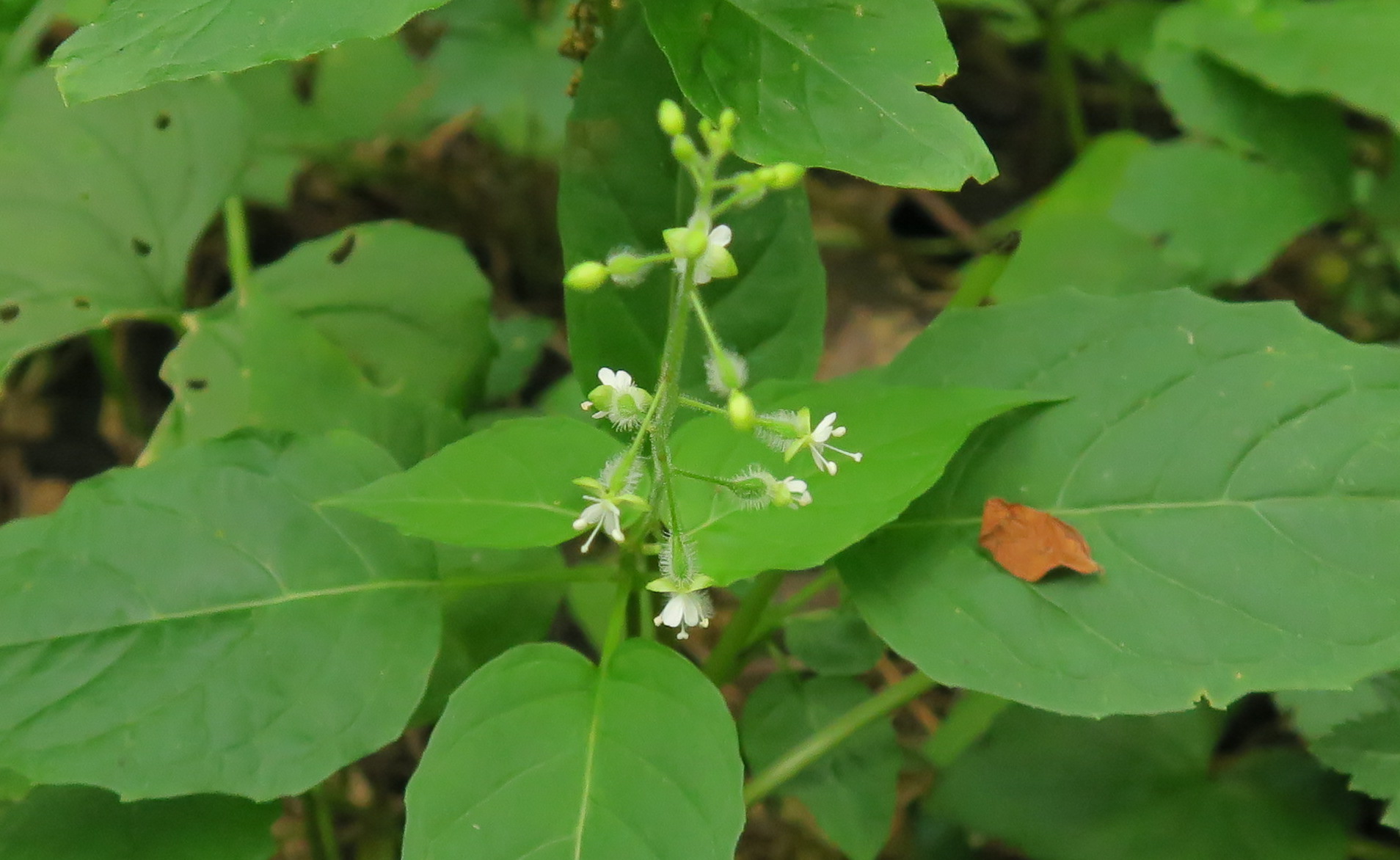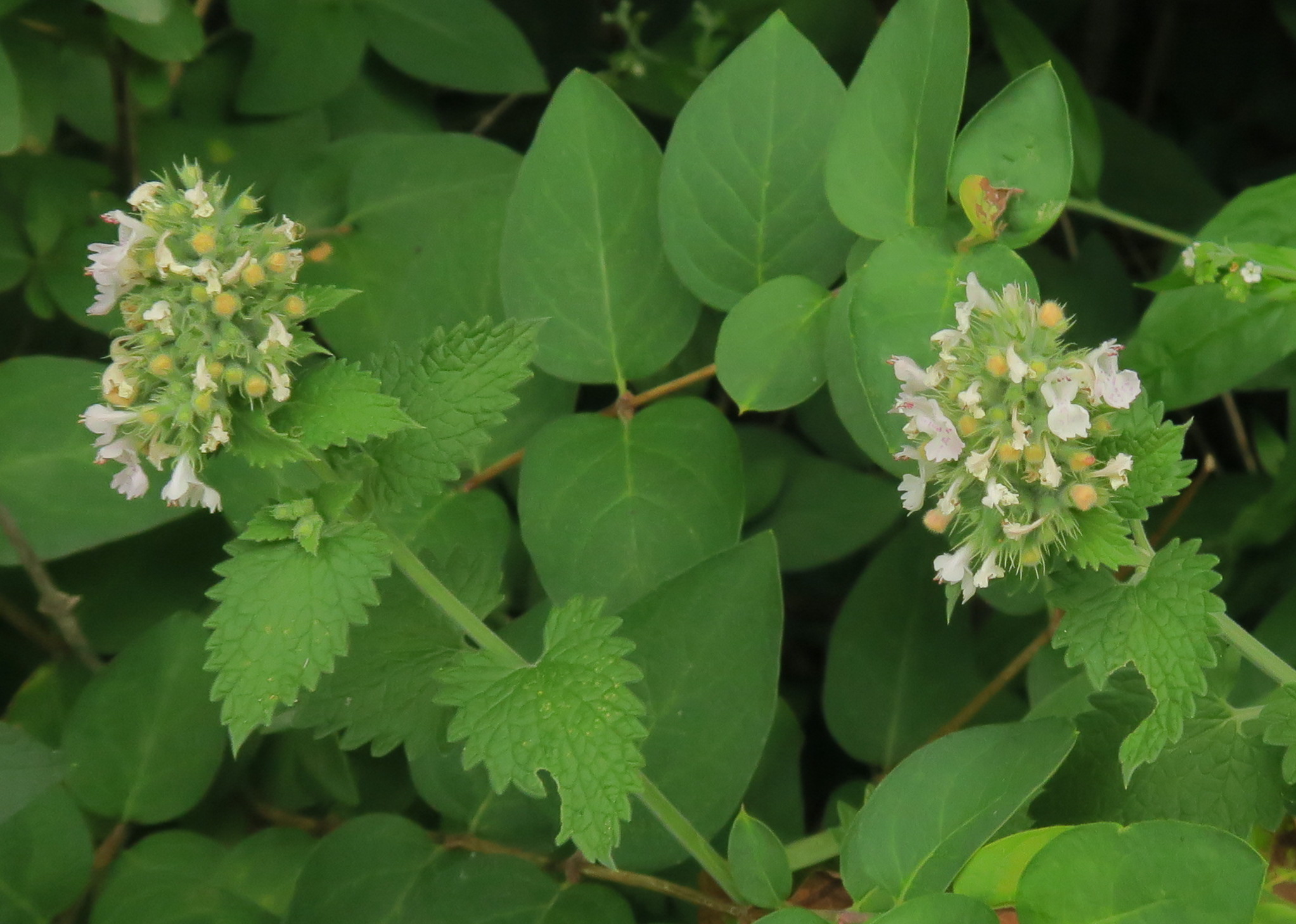After showcasing many native plants last week, I decided to focus today on a non-native member of the mallow family. Flower of an hour (Hibiscus trionum) has spread widely across most of the U.S. and Canada. While many consider it a weed or pest, some people grow it as an ornamental. You may find it near roadsides or in residential yards.
I’ve seen more of these plants than usual this year, because a street improvement project in my Windsor Heights neighborhood tore up a lot of curbs and sidewalks. The disturbed ground was perfect habitat for non-native plants. Like velvetleaf/buttonweed, seeds from flower of an hour “can remain viable in the soil for several years, if not decades,” according to the Illinois Wildflowers website.
Capturing usable photos was more challenging than I expected. I often saw these blossoms while walking my dog. But many times, when I came back later the same day, the flowers were gone. Jackie Carroll explained on the Gardening Knowhow website that flower of an hour “gets its name from the pale yellow or cream colored blossoms with dark centers that only last a fraction of a day and don’t open at all on cloudy days.”
Lora Conrad came to the rescue again with lovely pictures she took in Van Buren County.
Continue Reading...
